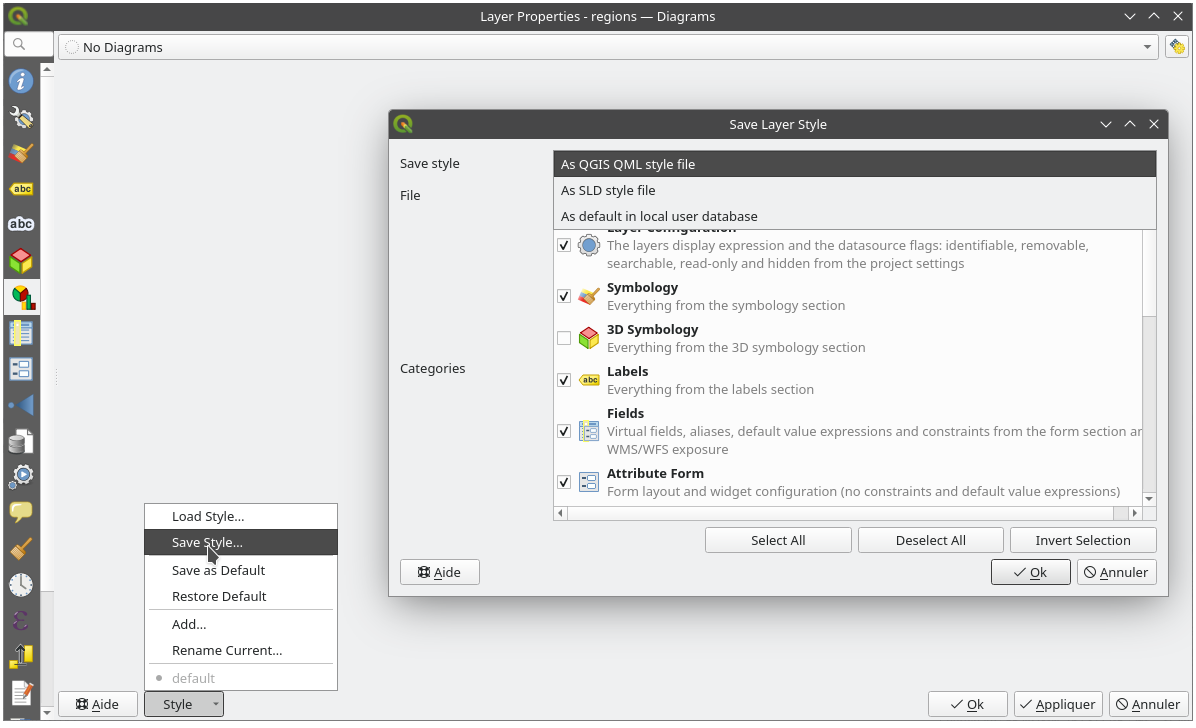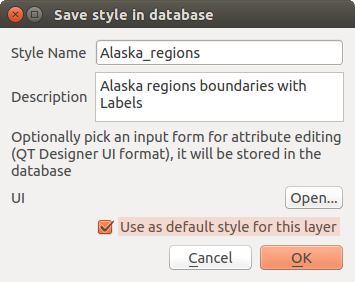Importante
La traducción es un esfuerzo comunitario puede unirse. Esta página está actualmente traducida en |progreso de traducción|.
8. Herramientas generales
8.1. Ayuda de contexto
Siempre que necesite ayuda sobre un tema específico, puede acceder a la página correspondiente en el Manual del usuario actual a través del botón Ayuda disponible en la mayoría de los cuadros de diálogo — tenga en cuenta que los complementos de terceros pueden apuntar a páginas web dedicadas.
8.2. Paneles
Por defecto, QGIS proporciona muchos paneles para trabajar. Algunos de estos paneles se describen a continuación, mientras que otros se pueden encontrar en diferentes partes del documento. Una lista completa de paneles predeterminados proporcionados por QGIS está disponible a través de menu and mentioned at Paneles.
8.2.1. Panel de capas
El panel Capas (también llamado leyenda del mapa) lista todas las capas del proyecto y le ayuda a gestionar su visibilidad y a dar forma al mapa. Puede mostrar u ocultar el panel pulsando Ctrl+1.
QGIS ofrece varias formas de añadir capas a un proyecto:
utilizando el botón Añadir de la pestaña dedicada al proveedor de datos en el diálogo Administrador de fuentes de datos
de QGIS Panel del navegador o Administrador de BD: haga doble clic, arrastre y suelte archivos y capas en QGIS o utilice el menú contextual
arrastrar y soltar archivos desde el explorador de archivos del sistema operativo a QGIS
En todos estos escenarios, puede abrir una o varias capas a la vez. Las nuevas capas se añaden al panel Capas:
si se sueltan sobre el panel Capas, en el lugar exacto donde se sueltan
en los demás casos, en un lugar que respete los ajustes globales comportamiento utilizado al añadir nuevas capas
y en caso de capas múltiples, se ordenan de forma que aumente la probabilidad de que su apilamiento sea lógico y las características sean visibles el mayor tiempo posible, utilizando la siguiente lógica (de arriba a abajo):
capas de puntos vectoriales
capas de líneas vectoriales
capas de polígonos vectoriales
capas de nubes de puntos
capas de malla
capas ráster
En la parte superior del panel Capas, una barra de herramientas le permite:
 Abrir el panel de diseño de capas (F7): conmuta el panel Estilo de Capa activo e inactivo.
Abrir el panel de diseño de capas (F7): conmuta el panel Estilo de Capa activo e inactivo. Add new group: ver Interactuar con grupos y capas
Add new group: ver Interactuar con grupos y capas Administrar Temas de Mapas: controla la visibilidad de las capas y su organización en diferentes temas de mapa.
Administrar Temas de Mapas: controla la visibilidad de las capas y su organización en diferentes temas de mapa. filtrar capas en el árbol de leyenda:
filtrar capas en el árbol de leyenda:Filter Legend by Map Content: solo las capas que están configuradas como visibles y cuyas características se cruzan con el lienzo del mapa actual tienen su estilo representado en el panel de capas. De lo contrario, se aplica un símbolo NULL genérico a la capa. Basándose en la simbología de la capa, esta es una forma conveniente de identificar qué tipo de características de qué capas cubren su área de interés.
Show Private Layers: un atajo conveniente para mostrar e interactuar con private layers en el panel Layers sin modificar la configuración del proyecto.
Mostrar sólo capas rotas: sólo se muestran las capas con fuentes de datos rotas.
 Filtrar Leyenda por Expresión: aplica una expresión para eliminar estilos del árbol de capas seleccionado que no tienen ninguna entidad que satisfaga la condición. Esto se puede usar para resaltar entidades que están dentro de un área/entidad dada de otra capa. En la lista desplegable, puede editar y borrar la expresión actualmente aplicada.
Filtrar Leyenda por Expresión: aplica una expresión para eliminar estilos del árbol de capas seleccionado que no tienen ninguna entidad que satisfaga la condición. Esto se puede usar para resaltar entidades que están dentro de un área/entidad dada de otra capa. En la lista desplegable, puede editar y borrar la expresión actualmente aplicada. Expandir Todo o
Expandir Todo o  Colapsar >Todo capas y Grupo en el panel de capas.
Colapsar >Todo capas y Grupo en el panel de capas.

Figura 8.1 Barra de herramientas de capa en panel de capas
Nota
Herramientas para Administrar el panel de Capas están también disponibles para elementos de mapa y leyenda en el diseñador de impresión..
8.2.1.1. Configurando temas de mapa
El botón desplegable  Administrar Temas de Mapa dá acceso a convenientes atajos para manipular la visibilidad de las capas en el panel Capas:
Administrar Temas de Mapa dá acceso a convenientes atajos para manipular la visibilidad de las capas en el panel Capas:
 Conmutar Capas Seleccionadas: cambia la visibilidad de la primera capa seleccionada en el panel y aplica ese estado a las otras capas seleccionadas. También accesible a través del atajo Space.
Conmutar Capas Seleccionadas: cambia la visibilidad de la primera capa seleccionada en el panel y aplica ese estado a las otras capas seleccionadas. También accesible a través del atajo Space.Conmutar Capas Seleccionadas Independientemente: cambia el estado de visibilidad de cada capa seleccionada
Más allá del simple control de la visibilidad de la capa, el menú  :sup:`Administrar temas de mapa” le permite configurar Temas de mapa en la leyenda y cambiar de un tema de mapa a otro. Un tema de mapa es una instantánea de la leyenda del mapa actual que registra:
:sup:`Administrar temas de mapa” le permite configurar Temas de mapa en la leyenda y cambiar de un tema de mapa a otro. Un tema de mapa es una instantánea de la leyenda del mapa actual que registra:
las capas establecidas como visibles en el panel :guilabel:”Capas”
y para cada capa visible:
la referencia al style aplicado a la capa
las clases visibles del estilo, p.ej. los elementos de la capa marcada en el Panel de Capas. Esto aplica a symbologies otra que no sea la representación de un solo símbolo
el estado colapsado/expandido de los nodos de capa y los grupos que se encuentran dentro
Para crear un tema de mapa:
Marca una capa que quiera mostrar
Configure las propiedades de capa (simbología, diagrama, etiquetas…) como siempre
Expanda el menú al fondo y haga click en Añadir… para almacenar los ajustes como a new style embedded in the project
Nota
Un tema de mapa no recuerda los detalles actuales de las propiedades: solo se guarda una referencia al nombre del estilo, por lo que cada vez que aplica modificaciones a la capa mientras este estilo está habilitado (por ejemplo, cambie la representación de la simbología), el tema del mapa se actualiza con nueva información.
Repetir los pasos previos como sea necesario para las otras capas
si es aplicable, expanda o colapse grupos o nodos de la capa visible en el panel Capas
Click en el botón
 Administrar Temas de Mapa en la parte superior del panel, y Añadir Tema…
Administrar Temas de Mapa en la parte superior del panel, y Añadir Tema…Introduzca el nombre del tema del mapa y haga click en :guilabel:”OK”
El nuevo tema se listará en la parte inferior del menú desplegable  .
.
Puede crear tantos temas de mapa como necesite: siempre que la combinación actual en la leyenda del mapa (capas visibles, su estilo activo, los nodos de leyenda del mapa) no coincida con ningún contenido de tema de mapa existente como se define arriba, haga clic en Agregar Tema… para crear un nuevo tema de mapa, o use para actualizar un tema de mapa. Puede renombrar el tema de mapa activo con Renombrar Tema Actual… o usando el botón Borrar Tema Actual para borrarlo.
Los temas de mapas son útiles para cambiar rápidamente entre diferentes combinaciones preconfiguradas: seleccione un tema de mapa en la lista para restaurar su combinación. Todos los temas configurados también son accesibles en el diseño de impresión, lo que le permite crear diferentes elementos de mapa basados en temas específicos e independientes de la representación del lienzo principal actual (consulte Map item layers).
8.2.1.3. Interactuar con grupos y capas
Las capas de la ventana de leyenda pueden organizarse en grupos. Hay diferentes maneras de hacerlo:
Presione el icono
 para añadir un nuevo grupo. Escriba un nombre para el grupo y presione Enter. Ahora haga click en una capa existente y arrástrela al grupo.
para añadir un nuevo grupo. Escriba un nombre para el grupo y presione Enter. Ahora haga click en una capa existente y arrástrela al grupo.Seleccione más de una capa y pulse el icono |carpeta|. Las capas seleccionadas se insertan automáticamente en el nuevo grupo.
Seleccione algunas capas, haga click derecho en la ventana de la leyenda y elija Grupo seleccionado. Las capas seleccionadas se colocarán automáticamente en un nuevo grupo.
Para mover una capa fuera de un grupo, arrástrela o haga click derecho sobre ella y elija Mover fuera del grupo: la capa se mueve del grupo y se coloca encima de ella. Los grupos también se pueden anidar dentro de otros grupos. Si una capa se coloca en un grupo anidado, Mover fuera del grupo moverá la capa fuera de todos los grupos anidados.
Para mover un grupo o capa a la cumbre del panel de capas, o bien arrástrela a la parte superior, o elija Mover Arriba. Si usa está opción en una capa anidad en un grupo, la capa es movida a la cúspide del grupo actual. La opción MOver abajo sigue la misma lógica para mover capas y grupos abajo.
La casilla de verificación para un un grupo mostrará u ocultará las capas marcadas en el grupo con un click. Con Ctrl presionado, la casilla de verificación activará o desactivará todas las capas en el grupo y sus subgrupos..
Ctrl-click en una capa marcada/desmarcada desmarcará/marcará la capa y todos sus padres.
Habilitar la opción Grupo mutuamente exclusivo significa que puede hacer que un grupo tenga solo una capa visible al mismo tiempo. Siempre que una capa dentro del grupo sea visible, las demás se alternarán como no visibles.
Es posible seleccionar más de una capa o grupo al mismo tiempo manteniendo presionada la tecla Ctrl mientras hace click en capas adicionales. Luego puede mover todas las capas seleccionadas a un nuevo grupo al mismo tiempo.
También puede eliminar más de una capa o grupo a la vez seleccionando varios elementos con la tecla Ctrl y luego presionando Ctrl + D: todas las capas o grupos seleccionados se eliminarán de la lista de capas.
Mas información de capas y grupos usando el icono indicador
En algunas circunstancias, el formato o los iconos junto a la capa o grupo en el panel Capas cambian para dar más información sobre la capa/grupo. Estos elementos son:
 para indicar que la capa está en modo edición y puede modificar los datos
para indicar que la capa está en modo edición y puede modificar los datos para indicar que la capa que se está editando tiene algunos cambios sin guardar
para indicar que la capa que se está editando tiene algunos cambios sin guardar indicar a filter aplicado a la capa. Pase el cursor sobre el icono para ver la expresión de filtro y haga doble clic para actualizar la consulta
indicar a filter aplicado a la capa. Pase el cursor sobre el icono para ver la expresión de filtro y haga doble clic para actualizar la consulta para identificar las capas que son requeridas en el proyecto, por lo tanto no removibles
para identificar las capas que son requeridas en el proyecto, por lo tanto no removibles para identificar en embedded group or layer y la ruta a su archivo de proyecto original
para identificar en embedded group or layer y la ruta a su archivo de proyecto original para identificar una capa cuya fuente datos no estaba disponible en el archivo de apertura del proyecto (ver Manejo de rutas de archivo rotas). Click en el icono para actualizar la ruta de la fuente o seleccione la entrada Reparar Fuente de Datos… del menú contextual de capa.
para identificar una capa cuya fuente datos no estaba disponible en el archivo de apertura del proyecto (ver Manejo de rutas de archivo rotas). Click en el icono para actualizar la ruta de la fuente o seleccione la entrada Reparar Fuente de Datos… del menú contextual de capa. para recordarle que la capa es una capa de borrador temporal y su contenido será descartado cuando cierre este proyecto. Para evitar la perdida de datos yh hacer la capa permanente, pulse el icono para almacenar la capa en cualquiera de los formatos vectoriales GDAL soportados por QGIS.
para recordarle que la capa es una capa de borrador temporal y su contenido será descartado cuando cierre este proyecto. Para evitar la perdida de datos yh hacer la capa permanente, pulse el icono para almacenar la capa en cualquiera de los formatos vectoriales GDAL soportados por QGIS. para identificar una capa utilizada en offline editing mode.
para identificar una capa utilizada en offline editing mode. para identificar una capa que no tiene un CRS o es desconocido
para identificar una capa que no tiene un CRS o es desconocido para capas con coordenadas almacenadas en un sistema de referencia de coordenadas que es inherentemente de baja precisión (requiere que la corresponding setting esté habilitada)
para capas con coordenadas almacenadas en un sistema de referencia de coordenadas que es inherentemente de baja precisión (requiere que la corresponding setting esté habilitada) para identificar una capa temporal controlada por la animación del lienzo
para identificar una capa temporal controlada por la animación del lienzo para identificar una capa que tiene notes asociada
para identificar una capa que tiene notes asociadaUn nombre en gris, cuando la escala actual del lienzo del mapa está fuera del rango de escala de visibilidad de la capa (como se establece en sus propiedades ). Seleccione la opción Zoom a escala visible del menú contextual para ampliar el mapa hasta el límite de escala de visibilidad más cercano de la capa.
Control de la representación de capas mediante agrupación
Los grupos son un medio de estructurar las capas dentro de un árbol en el proyecto, pero también pueden influir en el modo en que se renderizan las capas que los componen, es decir, como un único objeto aplanado durante el renderizado de mapas.
La opción para dicho renderizado está disponible dentro del panel Estilización de capas siempre que se seleccione un grupo. En la pestaña  Simbología, marque la casilla
Simbología, marque la casilla  Renderizar capas como grupop para activar un conjunto de opciones para controlar la apariencia de las capas hijas como un todo, en lugar de capas individuales:
Renderizar capas como grupop para activar un conjunto de opciones para controlar la apariencia de las capas hijas como un todo, en lugar de capas individuales:
Opacidad: Los objetos espaciales de las capas secundarias que están oscurecidas por otras capas secundarias permanecen oscurecidas, y la opacidad se aplica sólo a «todo el grupo».

Figura 8.2 Establecer opacidad en capas frente a un grupo
La imagen de la izquierda muestra dos capas renderizadas al 50% de opacidad (los objetos espaciales subyacentes son visibles, pero semiocultos por el rasgo rojo al 50% situado encima). La segunda imagen muestra el resultado de ajustar la opacidad en el grupo (partes de la capa azul subyacente hijo está completamente oscurecida por la capa roja en la parte superior y luego el resultado se renderiza al 50% de opacidad).
Modos de mezcla: Al igual que opacidad configurando un modo de mezcla (como multiplicar, superponer, …) para un grupo completo da como resultado primero aplanar las características de las capas secundarias, con las superiores oscureciendo las más bajas. La representación se obtiene combinando el grupo plano y las capas que se encuentran debajo del grupo.
Cuando las capas hijas tienen modos de fusión asignados, se aplica antes de aplanar, pero el alcance se restringe a afectar sólo a otras capas hijas de ese grupo, y no a otras capas situadas por debajo de todo el grupo.
Algunas opciones más de modos de mezcla están disponibles para las capas secundarias en los grupo, en su pestaña Simbología que lleva a cabo operaciones de estilo «recorte» sobre otras capas secundarias durante la representación. Usted puede, p.ej. recortar la representación del contenido de una capa con el contenido de una segunda que actúa como capa «máscara».
Efectos de capa: aplica efectos solo a la representación aplanada de las capas secundarias; de este modo, p.ej. So e.g. un efecto de sombra paralela aplicado al grupo no sería visible para las capas secundarias oscurecidas.
Cuando un grupo se establece en Renderizar capas como grupo, sólo se mostrará el grupo en la lista del panel Orden de capas. Los hijos del grupo no serán visibles en esta lista de orden, ya que su orden viene determinado por la colocación de la capa del grupo.
8.2.1.4. Editando estilo de capa
Desde el panel Capas, dispone de accesos directos para cambiar el renderizado de las capas de forma rápida y sencilla.
Haga clic con el botón derecho en una capa y seleccione en la lista para:
véase la estilos actualmente disponible para la capa. Si ha definido muchos estilos para la capa, puede cambiar de uno a otro y la representación de la capa se actualizará automáticamente en el lienzo del mapa.
copiar parte o todo el estilo actual, y cuando sea aplicable, pegar un estilo copiado desde otra capa
Renombrar actual… estilo
Añadir un nuevo estilo (que en realidad es una copia del actual)
o Quitar estilo actual (sólo cuando hay varios estilos disponibles).
Truco
Compartir ágilmente un estilo de capa
En el menú contextual, copie el estilo de una capa y péguelo en un grupo o en una selección de capas: el estilo se aplica a todas las capas que sean del mismo tipo (vectorial, ráster, malla, nube de puntos, …) que la capa original y, en el caso de las capas vectoriales, que tengan el mismo tipo de geometría (punto, línea o polígono).
Cuando se utiliza una simbología basada en la clasificación de objetos espaciales (por ejemplo, categorized, graduated or rule-based para capas vectoriales, o clasificación para nubes de puntos), hacer clic con el botón derecho en una entrada de clase en los paneles Capas permite editar la visibilidad de las clases (y sus características) y evitar (des)marcarlas una a una:
Con capa vectorial, el menú contextual de una entrada de hoja de clase también da acceso a:
 Seleccionar objetos espaciales: seleccione en la capa todos los objetos espaciales que coincidan con esa clase.
Seleccionar objetos espaciales: seleccione en la capa todos los objetos espaciales que coincidan con esa clase. Mostrar en tabla de atributos: abra una tabla de atributos filtrada sólo a los objetos espaciales que coincidan con esa clase.
Mostrar en tabla de atributos: abra una tabla de atributos filtrada sólo a los objetos espaciales que coincidan con esa clase.actualiza el color del símbolo usando una Rueda de Color. Para mayor comodidad, los colores usados recientemente también están disponibles en la parte inferior de la rueda de colores.
Editar Símbolo…: abra el diálogo Selector de Símbolos para cambiar el símbolo del objeto espacial (símbolo, tamaño, color…).
Copy Symbol
Paste Symbol
Truco
Al hacer doble click en una entrada de hoja de clase, también se abre el cuadro de diálogo Selector de símbolo.
8.2.2. Panel de Estilizado de Capa
El panel Estilizado de capa (también habilitado con Ctrl + 3) es un acceso directo a algunas de las funcionalidades del diálogo Propiedades de capa. Proporciona una manera rápida y fácil de definir la representación y el comportamiento de una capa, y visualizar sus efectos sin tener que abrir el cuadro de diálogo de propiedades de capa.
Además de evitar el cuadro de diálogo de propiedades de capa de bloqueo (o «modal»), el panel de estilo de capa también evita saturar la pantalla con cuadros de diálogo y contiene la mayoría de las funciones de estilo (selector de color, propiedades de efectos, edición de reglas, sustitución de etiquetas …): por ejemplo, al hacer click en los botones de color dentro del panel de estilo de capa, se abre el cuadro de diálogo selector de color dentro del panel de estilo de capa en lugar de hacerlo como un cuadro de diálogo separado.
Desde una lista desplegable de capas actuales en el panel de capas, seleccione un elemento y:
En función del elemento activo, ajuste:
 Simbología para grupos (véase Control de la representación de capas mediante agrupación)
Simbología para grupos (véase Control de la representación de capas mediante agrupación)Propiedades
 Symbología,
Symbología,  Transparencia, e
Transparencia, e  Histograma para capa ráster. Estas opciones son las mismas que en Dialogo de Propiedades Ráster.
Histograma para capa ráster. Estas opciones son las mismas que en Dialogo de Propiedades Ráster.Propiedades
 Symbología,
Symbología,  Etiquetas,
Etiquetas,  Máscara y
Máscara y  Vista 3D para capa Vectorial. Estas opciones son las mismas que en El Diálogo de las Propiedades del Vector y pueden ampliarse por propiedades personalizadas introducidas por complementos de terceros.
Vista 3D para capa Vectorial. Estas opciones son las mismas que en El Diálogo de las Propiedades del Vector y pueden ampliarse por propiedades personalizadas introducidas por complementos de terceros.Propiedades
 Symbología y
Symbología y  Vista 3D para capas de malla. Estas opciones son las mismas que en Propiedades del Conjunto de Datos tipo Malla.
Vista 3D para capas de malla. Estas opciones son las mismas que en Propiedades del Conjunto de Datos tipo Malla. Simbología,
Simbología,  Vista 3D y
Vista 3D y  Elevación propiedades para la capa de nubes de puntos. Estas opciones son las mismas que en Propiedades de las nubes de puntos.
Elevación propiedades para la capa de nubes de puntos. Estas opciones son las mismas que en Propiedades de las nubes de puntos.
Activar y configurar las propiedades sombreado global de mapas
Administre los estilos asociados en
 Administrador de Estilo (más detalles en Administrando Estilos Personalizados ).
Administrador de Estilo (más detalles en Administrando Estilos Personalizados ).Ver la
 Historial de los cambios que aplicó al estilo de capa en el proyecto actual: por lo tanto, puede cancelar o restaurar a cualquier estado seleccionándolo en la lista y haciendo click en :guilabel:` Aplicar`.
Historial de los cambios que aplicó al estilo de capa en el proyecto actual: por lo tanto, puede cancelar o restaurar a cualquier estado seleccionándolo en la lista y haciendo click en :guilabel:` Aplicar`.
Otra característica poderosa de este panel es la casilla de verificaión  Actualización en vivo. Tíquelo para representar sus cambios inmediatamente en el lienzo del mapa: ya no necesita hacer click en el botón Aplicar.
Actualización en vivo. Tíquelo para representar sus cambios inmediatamente en el lienzo del mapa: ya no necesita hacer click en el botón Aplicar.
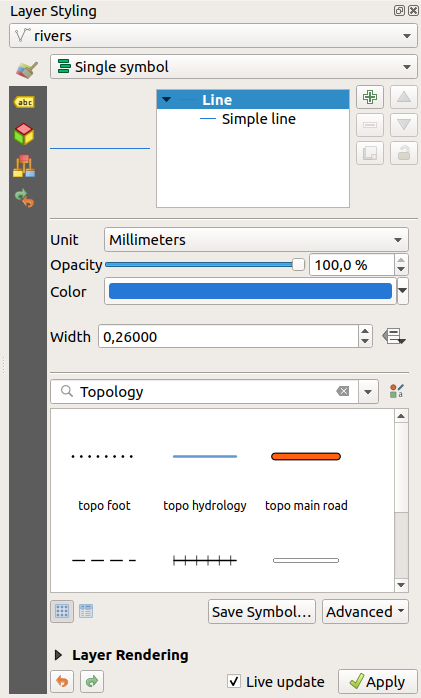
Figura 8.3 Definir la simbología de una capa desde el panel de estilo de capa
8.2.3. Panel de orden de capa
Por defecto, las capas que se muestran en el lienzo del mapa QGIS se dibujan siguiendo su orden en el panel Capas: cuanto más alta sea una capa en el panel, más alta (por lo tanto, más visible) estará en la vista del mapa .
Puede definir un orden de dibujo para las capas independientemente del orden en el panel de capas con el panel Orden de Capas activado en el menú o con Ctrl+9. Marque  Control del orden de representación debajo de la lista de capas y reorganice las capas en el panel como desee. Este orden será el que se aplica al lienzo del mapa. Por ejemplo, en Figura 8.4, puede ver que los objetos de
Control del orden de representación debajo de la lista de capas y reorganice las capas en el panel como desee. Este orden será el que se aplica al lienzo del mapa. Por ejemplo, en Figura 8.4, puede ver que los objetos de airports son mostrados sobre el poligno de alaska a pesar de la ubicación de esas capas” en el panel de Capas.
Desmarcando  Controlar orden de representación volverá al comportamiento predeterminado.
Controlar orden de representación volverá al comportamiento predeterminado.
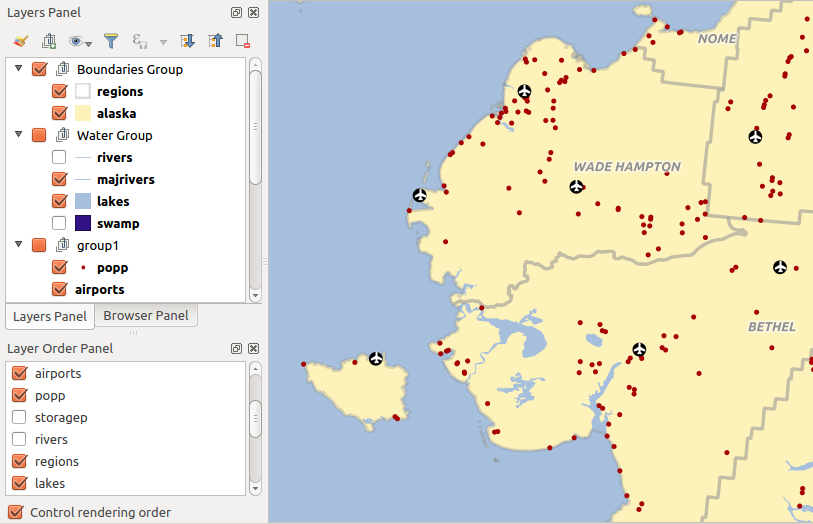
Figura 8.4 Definir un orden de capas independiente de la leyenda.
8.2.4. Panel de información general
El panel Visión general`(:kbd:`Ctrl+8) muestra un mapa con la extensión completa de la vista de algunas de las capas. El mapa de la visión general se llena de capas con la opción Mostrar en vista general del menú o en el menú contextual de capa. Dentro de la vista, un rectángulo rojo muestra la extensión actual del lienzo del mapa, lo que le ayuda a determinar rápidamente qué área del mapa completo está viendo actualmente. Si hace click y arrastra el rectángulo rojo en el marco general, la extensión de la vista del mapa principal se actualizará en consecuencia.
Tenga en cuenta que las etiquetas no se representan en la vista general del mapa, incluso si las capas utilizadas en la vista general del mapa se han configurado para el etiquetado.
8.2.5. Panel de mensajes de registro
Al cargar o procesar algunas operaciones, puede rastrear y seguir mensajes que aparecen en diferentes pestañas usando el  Panel de Mensajes de Registro. Se puede activar utilizando el icono más a la derecha en la barra de estado inferior.
Panel de Mensajes de Registro. Se puede activar utilizando el icono más a la derecha en la barra de estado inferior.
8.2.6. Panel de deshacer/rehacer
Para cada capa que se está editando, el panel Deshacer/Rehacer ( Ctrl + 5) muestra la lista de acciones realizadas, lo que le permite deshacer rápidamente un conjunto de acciones seleccionando la acción mencionada anteriormente. Más detalles en Undo and Redo edits.
8.2.7. Panel de resumen estadístico
El panel Estadísticas (Ctrl+6) proporciona información resumida sobre cualquier capa vectorial. Este panel le permite seleccionar:
la capa vectorial sobre la que se calcularán las estadísticas: puede seleccionarse en el menú desplegable superior, o sincronizarse con la capa activa en el panel Capas utilizando la casilla Seguir capa seleccionada situada en la parte inferior de la lista desplegable de estadísticas.
el campo o
 expresión a usar: para cada capa, la última entrada se recuerda y se procesa automáticamente al volver a seleccionar la capa.
expresión a usar: para cada capa, la última entrada se recuerda y se procesa automáticamente al volver a seleccionar la capa.las estadísticas a devolver usando el botón desplegable en la parte inferior derecha del cuadro de diálogo. Dependiendo del tipo de campo (o valores de expresión), las estadísticas disponibles son:
Estadísticas |
Cadena |
Entero |
Coma flotante |
Fecha |
|---|---|---|---|---|
Contar |
||||
Contar valores distintos |
||||
Contar valores faltantes |
||||
Sum |
||||
Media |
||||
Desviación estándar |
||||
Desviación estándar en ejemplo |
||||
Valor mínimo |
||||
Valor máximo |
||||
Rango |
||||
Minoría |
||||
Mayoría |
||||
Variedad |
||||
Primer cuartil |
||||
Tercer cuartil |
||||
Rango intercuartil |
||||
Longitud mínima |
||||
Longitud máxima |
||||
Longitud Media |
El resumen estadístico puede ser:
devuelto para toda la capa o
 Sólo objetos espaciales seleccionados
Sólo objetos espaciales seleccionados copiado al portapapeles y pegado como una tabla en otra aplicación
copiado al portapapeles y pegado como una tabla en otra aplicaciónrecalculado utilizando el botón
 cuando cambia la fuente de datos subyacente (por ejemplo, características / campos nuevos o eliminados, modificación de atributos)
cuando cambia la fuente de datos subyacente (por ejemplo, características / campos nuevos o eliminados, modificación de atributos)

Figura 8.5 Mostrar estadística en un campo
8.2.8. Panel de herramientas de desarrollo/depuración
El panel Herramientas de depuración/desarrollo (F12) proporciona un lugar unificado para el manejo y depuración de acciones dentro de QGIS. Las herramientas disponibles están organizadas en las siguientes pestañas:
 Registrador de red: registra y muestra las solicitudes e interacciones de red.
Registrador de red: registra y muestra las solicitudes e interacciones de red. Registrador de consultas: registra los comandos SQL emitidos por los proveedores de datos y la duración de la ejecución.
Registrador de consultas: registra los comandos SQL emitidos por los proveedores de datos y la duración de la ejecución. Perfilador: proporciona los tiempos de carga de cada acción con el fin de detectar las causas de la ralentización.
Perfilador: proporciona los tiempos de carga de cada acción con el fin de detectar las causas de la ralentización.
Nota
Los autores de complementos pueden ampliar el panel con pestañas personalizadas para depurar y desarrollar sus propios complementos. Esto se hace usando el método registerDevToolWidgetFactory.
8.2.8.1. Registrador de red
La pestaña  Registrador de red le ayuda a registrar y mostrar las peticiones de red, junto con un montón de detalles útiles como el estado de la petición y la respuesta, cabecera, errores, errores de configuración SSL, tiempos de espera, estado de la caché, etc.
Registrador de red le ayuda a registrar y mostrar las peticiones de red, junto con un montón de detalles útiles como el estado de la petición y la respuesta, cabecera, errores, errores de configuración SSL, tiempos de espera, estado de la caché, etc.
Desde su barra de herramientas superior, puede:
 Guardar registro…: primero mostrará una gran advertencia de que el registro es sensible y debe ser tratado como confidencial y luego le permitirá guardar el registro.
Guardar registro…: primero mostrará una gran advertencia de que el registro es sensible y debe ser tratado como confidencial y luego le permitirá guardar el registro.Pulse el menú desplegable
 Ajustes para seleccionar si desea Mostrar solicitudes aceptadas, Mostrar tiempos de espera y Mostrar respuestas servidas desde la caché.
Ajustes para seleccionar si desea Mostrar solicitudes aceptadas, Mostrar tiempos de espera y Mostrar respuestas servidas desde la caché. Desactivar caché: desactivará la caché para que haya que realizar cada petición.
Desactivar caché: desactivará la caché para que haya que realizar cada petición. Filtrar peticiones en función de subconjuntos de cadenas URL o del estado de la petición
Filtrar peticiones en función de subconjuntos de cadenas URL o del estado de la petición
Al hacer clic con el botón derecho en una solicitud, puede:
Open URL que abrirá la URL en su navegador predeterminado.
Copiar URL;
Copy As cURL para usarlo en la terminal.
Copiar como JSON: copia los valores del árbol como una cadena json al portapapeles, para facilitar su pegado en informes de errores o para asistencia remota.
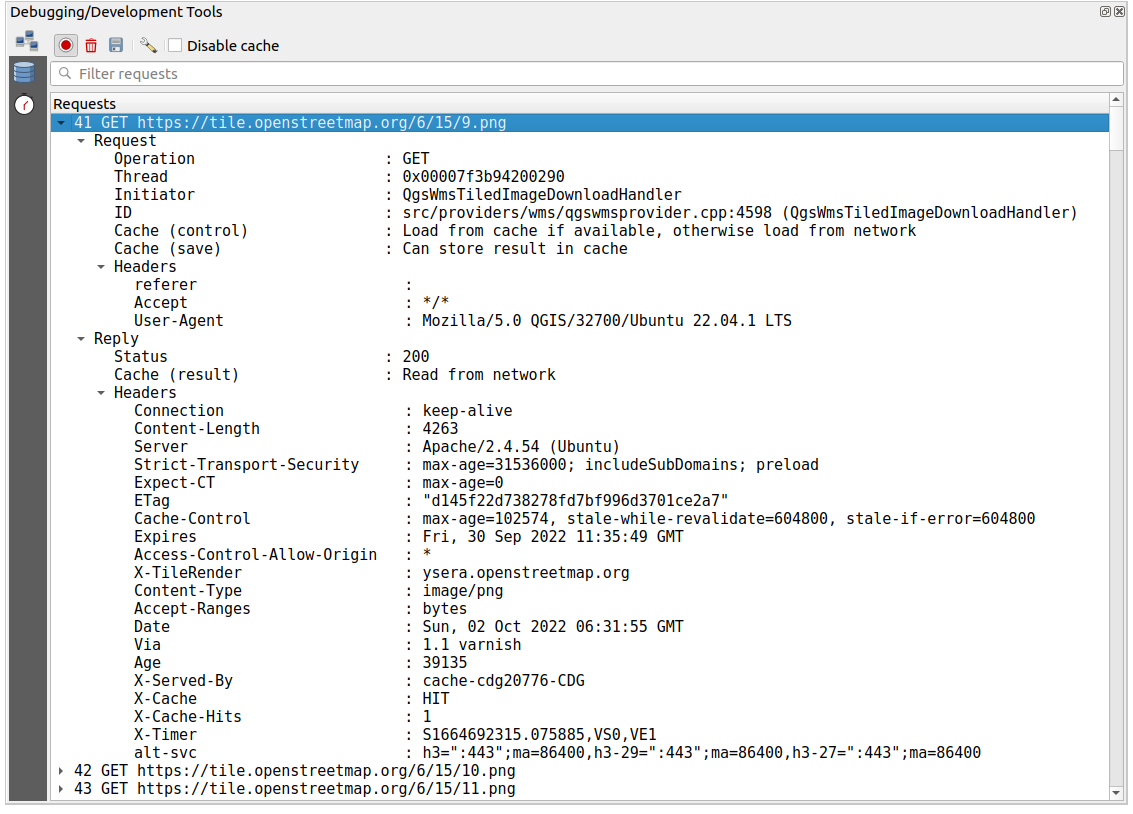
Figura 8.6 Salida del registrador de red para solicitud GET
8.2.8.2. Registrador de consultas
El  Registrador de consultas es el lugar para registrar los comandos SQL enviados por el proveedor de datos y la API de conexiones a la base de datos backend, junto con su tiempo de ejecución medido por QGIS (es decir, en el cliente que envió los comandos). Esto puede ser útil cuando se investiga el rendimiento de una capa en particular durante la depuración o el desarrollo de un algoritmo o plugin de QGIS.
Registrador de consultas es el lugar para registrar los comandos SQL enviados por el proveedor de datos y la API de conexiones a la base de datos backend, junto con su tiempo de ejecución medido por QGIS (es decir, en el cliente que envió los comandos). Esto puede ser útil cuando se investiga el rendimiento de una capa en particular durante la depuración o el desarrollo de un algoritmo o plugin de QGIS.
Desde su barra de herramientas superior, puede:
 Guardar registro…: primero mostrará una gran advertencia de que el registro es sensible y debe ser tratado como confidencial y luego le permitirá guardar el registro.
Guardar registro…: primero mostrará una gran advertencia de que el registro es sensible y debe ser tratado como confidencial y luego le permitirá guardar el registro. Filtrar consultas basándose en los subconjuntos de la cadena de consulta o en detalles como el tipo de proveedor, la hora de inicio, el iniciador, …
Filtrar consultas basándose en los subconjuntos de la cadena de consulta o en detalles como el tipo de proveedor, la hora de inicio, el iniciador, …
Haga clic con el botón derecho del ratón en una consulta notificada:
Copiar comando SQL llamado por QGIS en la base de datos
Copiar como JSON: copia los valores del árbol como una cadena json al portapapeles, para facilitar su pegado en informes de errores o para asistencia remota.

Figura 8.7 Salida del Registrador de Consultas
8.2.8.3. Perfilador
La pestaña ![]() Perfilador permite obtener los tiempos de carga de cada una de las operaciones implicadas en las acciones solicitadas por el usuario. Dependiendo del contexto, estas operaciones pueden ser la lectura de configuraciones, menús, creación de lienzos de mapas o vistas 3D, resolución de referencias de capas de mapas, carga de marcadores o diseños, … Esto ayuda a identificar las causas de los tiempos de carga lentos.
Perfilador permite obtener los tiempos de carga de cada una de las operaciones implicadas en las acciones solicitadas por el usuario. Dependiendo del contexto, estas operaciones pueden ser la lectura de configuraciones, menús, creación de lienzos de mapas o vistas 3D, resolución de referencias de capas de mapas, carga de marcadores o diseños, … Esto ayuda a identificar las causas de los tiempos de carga lentos.
Las acciones predeterminadas compatibles se pueden seleccionar en el menú desplegable Categoría:
Inicio le ayuda a diagnosticar (y solucionar) los largos tiempos de inicio ocasionales de QGIS.
Carga del proyecto le permite obtener un desglose de las distintas etapas de la carga del proyecto, con el fin de identificar las causas de los tiempos de carga lentos del proyecto.
La herramienta de Renderizador de mapas le permite identificar los puntos débiles en el renderizado de sus mapas y localizar exactamente qué capas están causando largos redibujados de mapas.

Figura 8.8 Perfilador para el inicio de QGIS
8.3. Incorporación de capas de proyectos externos
A veces, le gustaría mantener algunas capas en diferentes proyectos, pero con el mismo estilo. Puede crear un default style para estas capas o incrustarlas desde otro proyecto para ahorrar tiempo y esfuerzo.
Incrustar capas y grupos de un proyecto existente tiene algunas ventajas sobre el estilo:
Todo tipo de capas (vectoriales o ráster, local o en línea…) pueden ser añadidos
Al obtener grupos y capas, puede mantener la misma estructura de árbol de las capas de «fondo» en sus diferentes proyectos
Si bien las capas incrustadas son editables, no puede cambiar sus propiedades, como simbología, etiquetas, formularios, valores predeterminados y acciones, lo que garantiza la coherencia entre los proyectos.
Modifique los elementos en el proyecto original y los cambios se propagan a todos los demás proyectos.
Si desea incrustar contenido de otros archivos de proyecto en su proyecto, seleccione :
Click en el botón … para buscar un proyecto: puede ver el contenido del proyecto (ver Figura 8.9)
Mantenga pulsado Ctrl ( o
 Cmd) y haga clic en las capas y grupos que desea recuperar
Cmd) y haga clic en las capas y grupos que desea recuperarHaga clic en Aceptar.
Las capas y grupos seleccionados se incrustan en el panel Capas y se muestran en el lienzo del mapa. Un ícono  se agrega al lado de su nombre para reconocimiento y al pasar el cursor sobre él se muestra una herramienta de información con la ruta original del archivo del proyecto.
se agrega al lado de su nombre para reconocimiento y al pasar el cursor sobre él se muestra una herramienta de información con la ruta original del archivo del proyecto.

Figura 8.9 Seleccionar capas y grupos para empotrar
Al igual que cualquier otra capa, una capa incrustada se puede eliminar del proyecto haciendo clic derecho en la capa y haciendo clic en  Borrar.
Borrar.
Truco
Cambiar la representación de una capa incrustada
No es posible cambiar la representación de una capa incrustada, a menos que realice los cambios en el archivo original del proyecto. Sin embargo, al hacer clic con el botón derecho en una capa y seleccionar:guilabel:Duplicar crea una capa con todas las funciones y que no depende del proyecto original. Luego puede eliminar con seguridad la capa vinculada.
8.4. Interactuando con entidades
8.4.1. Seleccionando objetos espaciales
QGIS proporciona múltiples herramientas para seleccionar entidades en el lienzo del mapa. Las herramientas de selección están disponibles en el menú o en la:guilabel:Barra de Herramientas de Selección.
Nota
Las herramientas de selección funcionan con la capa actualmente activa.
8.4.1.1. Seleccionando manualmente en el lienzo del mapa
Para seleccionar una o más funciones con el ratón, puede usar una de las siguientes herramientas:
Nota
Aparte de  Seleccionar entidades por polígono, estas herramientas de selección manual le permiten seleccionar entidades en el lienzo del mapa con un solo click.
Seleccionar entidades por polígono, estas herramientas de selección manual le permiten seleccionar entidades en el lienzo del mapa con un solo click.
Nota
Use la herramienta  Seleccionar objetos mediante polígono para usar un objeto poligonal existente (de cualquier capa) para seleccionar capas superpuestas en la capa activa. Click-derecho en el polígono y elijala desde el menú contextual que muestra una lista de todos los polígonos que contienen el punto clickado. Todos los objetos de la capa activa que superponen al polígono son seleccionados.
Seleccionar objetos mediante polígono para usar un objeto poligonal existente (de cualquier capa) para seleccionar capas superpuestas en la capa activa. Click-derecho en el polígono y elijala desde el menú contextual que muestra una lista de todos los polígonos que contienen el punto clickado. Todos los objetos de la capa activa que superponen al polígono son seleccionados.
Truco
Use la herramienta para rehacer su última selección. Muy útil cuando ha realizado una selección minuciosa y luego hizo click accidentalmente en otro lugar y borró su selección.
Mientras se utiliza la herramienta  Seleccionar Objeto(s) espacial(es), manteniendo pulsado Shift o Ctrl (Cmd en macOS) se alterna si una característica está seleccionada (es decir, se añade a la selección actual o se elimina de ella).
Seleccionar Objeto(s) espacial(es), manteniendo pulsado Shift o Ctrl (Cmd en macOS) se alterna si una característica está seleccionada (es decir, se añade a la selección actual o se elimina de ella).
Para las otras herramientas, se pueden obtener diferentes comportamientos presionando:
Shift: añadir entidades a la selección actual
Ctrl/Cmd: resta objetos espaciales de la selección actual
Ctrl+Mayús/Cmd+Mayús: intersecar con la selección actual, es decir, mantener sólo las características superpuestas de la selección actual.
Alt: selecciona objetos espaciales que están totalmente dentro de la forma de la selección. Combinado con las teclas Shift o Ctrl/Cmd, puede añadir o sustraer elementos a/de la selección actual.
8.4.1.2. Selección automática
Las otras herramientas de selección, la mayoría de ellas disponibles en Attribute table, realice una selección basada en el atributo de una entidad o su estado de selección (tenga en cuenta que la tabla de atributos y el lienzo del mapa muestran la misma información, por lo que si selecciona una entidad en la tabla de atributos, también se seleccionará en el lienzo del mapa):
 Seleccionar por Expresión… seleccionar entidades usando el diálogo expresión
Seleccionar por Expresión… seleccionar entidades usando el diálogo expresión Deseleccionar Objetos de Todas las Capas o presiona Ctrl+Alt+A para deseleccionar todos los objetos en todas las capas
Deseleccionar Objetos de Todas las Capas o presiona Ctrl+Alt+A para deseleccionar todos los objetos en todas las capas Deseleccionar Objetos de la Capa Activa Actual o presione Ctrl+Shift+A
Deseleccionar Objetos de la Capa Activa Actual o presione Ctrl+Shift+A Seleccionar Todas las Entidades o presione Ctrl+A para seleccionar todas las entidades en la capa actual
Seleccionar Todas las Entidades o presione Ctrl+A para seleccionar todas las entidades en la capa actual Invertir Selección de Entidades para invertir la selección el la capa actual
Invertir Selección de Entidades para invertir la selección el la capa actual Seleccionar por ubicación para seleccionar las entidades en función de su relación espacial con otras entidades (en la misma capa o en otra; consulte Seleccionar por ubicacion)
Seleccionar por ubicación para seleccionar las entidades en función de su relación espacial con otras entidades (en la misma capa o en otra; consulte Seleccionar por ubicacion) Seleccionar dentro de la distancia para seleccionar características siempre que se encuentren dentro de la distancia máxima especificada desde las características referenciadas - véase Seleccione dentro de la distancia)
Seleccionar dentro de la distancia para seleccionar características siempre que se encuentren dentro de la distancia máxima especificada desde las características referenciadas - véase Seleccione dentro de la distancia)
Por ejemplo, si desea buscar regiones que son distritos de: file: region.shp de los datos de muestra de QGIS, puede:
Expanda el grupo Campos y Valores
Doble-click en el campo que quiera consultar («TYPE_2»)
Click en Todos Únicos en el panel que se muestra arriba a la derecha
De la lista, doble-click “Borough”. En el editor de campos Expresion, escriba la siguiente consulta:
"TYPE_2" = 'Borough'
Click en Seleccionar Entidades
Desde el cuadro de diálogo del generador de expresiones, también puede usar para hacer una selección que ha usado antes. El diálogo recuerda las últimas 20 expresiones utilizadas. Ver Expresiones para más información y ejemplos.
Truco
Guarde su selección en un nuevo archivo
Los usuarios pueden guardar las funciones seleccionadas en una Nueva capa temporal temporal o una Nueva capa vectorial usando y :menuselection:` Editar -> Pegar entidades como` en el formato deseado.
8.4.1.3. Seleccionar objetos por valor
Esta herramienta de selección abre el formulario de características de la capa que permite al usuario elegir qué valor buscar para cada campo, si la búsqueda debe distinguir entre mayúsculas y minúsculas y la operación que se debe utilizar. La herramienta también se completa automáticamente, rellenando automáticamente el cuadro de búsqueda con los valores existentes.
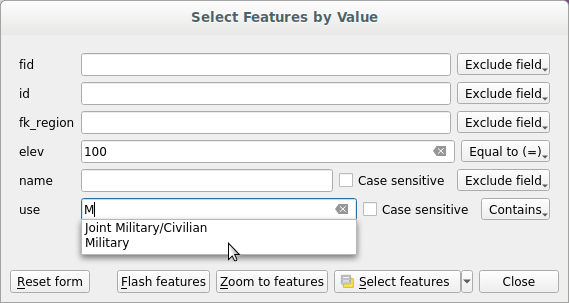
Figura 8.10 Filtrar / Seleccionar entidades usando el diálogo de formulario
Junto a cada campo, hay una lista desplegable con opciones para controlar el comportamiento de búsqueda:
Opción de búsqueda de campo |
Cadena |
Numeric |
Fecha |
|---|---|---|---|
Excluir campo de la búsqueda |
|||
Igual a (=) |
|||
No igual a (≠) |
|||
Mayor que (>) |
|||
Menor que (<) |
|||
Mayor o igual a (≥) |
|||
Menor o igual que (≤) |
|||
Entre (inclusivo) |
|||
No entre (inclusivo) |
|||
Contiene |
|||
No contiene |
|||
Falta (nulo) |
|||
No Falta (no nulo) |
|||
Empieza con |
|||
Acaba con |
Para las comparaciones de cadenas, también es posible utilizar la opción  mayúsculas y minúsculas.
mayúsculas y minúsculas.
Después de configurar todas las opciones de búsqueda, haga click en Seleccionar entidades para seleccionar las entidades coincidentes. Las opciones desplegables son:
Seleccionar objetos espaciales
Añadir a una selección actual
Borrar de la selección actual
Filtrar la selección actual
También puede borrar todas las opciones de búsqueda con el botón Restablecer formulario.
Una vez que las condiciones están establecidas, también puedes:
Zoom a las entidades en el lienzo del mapa sin la necesidad de una preselección
Funciones de flash, destacando las funciones coincidentes. Esta es una forma práctica de identificar una característica sin seleccionar o usar la herramienta Identificar. Tenga en cuenta que el flash no altera la extensión del lienzo del mapa y sería visible solo si la entidad se encuentra dentro de los límites del lienzo del mapa actual.
8.4.2. Identificando entidades
La herramienta  Identificar objetos espaciales permite interactuar con el lienzo del mapa y obtener información sobre características o píxeles en una ventana emergente. Se puede utilizar para consultar la mayoría de los tipos de capas soportados por QGIS (vector, ráster, malla, nube de puntos, wms, wfs, …). Para identificar un elemento, utilice
Identificar objetos espaciales permite interactuar con el lienzo del mapa y obtener información sobre características o píxeles en una ventana emergente. Se puede utilizar para consultar la mayoría de los tipos de capas soportados por QGIS (vector, ráster, malla, nube de puntos, wms, wfs, …). Para identificar un elemento, utilice
A continuación, haga clic en un objeto espacial o píxel de la capa activa. El elemento identificado se resalta en el lienzo del mapa mientras se abre el cuadro de diálogo Identificar resultados con información detallada sobre el mismo. El diálogo también muestra un conjunto de botones para la configuración avanzada.
8.4.2.1. El Dialogo de resultados de la identificación

Figura 8.11 Dialogo de resultados de la identificación
De abajo a arriba:
La Vista controla el aspecto general del cuadro de diálogo y el formato de los resultados; puede establecerse como:
Árbol: Esta es la vista predeterminada, devuelve los resultados en forma de árbol.
Tabla: disponible sólo para capas basadas en ráster, permite mostrar los resultados como una tabla cuyas columnas son
Layer,FID,AtributeyValue.o Gráfico: disponible sólo para capas basadas en ráster.
La etiqueta Modo le ayuda a seleccionar las capas de las que pueden obtenerse resultados. Estas capas deben establecerse visibles, mostrando los datos en el lienzo del mapa, y establecerse identificable desde las :menuselección:`Propiedades del proyecto --> Fuentes de datos --> Capacidades de las capas`. Los modos disponibles son:
Capa actual: sólo la(s) capa(s) seleccionada(s) en el panel Capas devuelve(n) resultados. Si se selecciona un grupo, los resultados se obtienen de sus capas hoja.
De arriba abajo, deténgase al principio: los resultados se obtienen a partir de la capa de la prestación o píxel situado más arriba bajo el ratón.
Arriba abajo: los resultados proceden de las capas con objeto espacial o píxel bajo el ratón.
Selección de capa: abre un menú contextual en el que el usuario selecciona la capa desde la que identificar los objetos espaciales. Si sólo hay un objeto espacial bajo el ratón, los resultados se muestran automáticamente.
En la parte superior del cuadro de diálogo Identificar resultados, un recuadro muestra la información devuelto por los objetos espaciales como una tabla, un gráfico o un árbol, en función de la vista seleccionada. Cuando se está en una vista de árbol, se dispone de un puñado de herramientas encima de los resultados:
 Expandir nuevos resultados por defecto para definir si la siguiente información de la entidad identificada debe contraerse o expandirse
Expandir nuevos resultados por defecto para definir si la siguiente información de la entidad identificada debe contraerse o expandirse Copiar el objeto espacial identificado al portapapeles, adecuado para pegar en una hoja de cálculo.
Copiar el objeto espacial identificado al portapapeles, adecuado para pegar en una hoja de cálculo. Imprimir respuesta HTML seleccionada: un formato basado en texto de los resultados para imprimir en papel o guardar como archivo
Imprimir respuesta HTML seleccionada: un formato basado en texto de los resultados para imprimir en papel o guardar como archivo .PDF.las herramientas de identificación interactiva: un menú desplegable con herramientas para seleccionar en el lienzo del mapa objetos espaciales o píxeles que identificar
En
 Identificar configuración, puede activar si desea:
Identificar configuración, puede activar si desea: Abrir formulario automáticamente para resultados de características individuales: Si se marca, cada vez que se identifique una característica, se abrirá un formulario mostrando sus atributos. Es una forma práctica de editar rápidamente los atributos de un objeto espacial.
Abrir formulario automáticamente para resultados de características individuales: Si se marca, cada vez que se identifique una característica, se abrirá un formulario mostrando sus atributos. Es una forma práctica de editar rápidamente los atributos de un objeto espacial. Ocultar atributos derivados de los resultados para mostrar sólo los campos realmente definidos en la capa
Ocultar atributos derivados de los resultados para mostrar sólo los campos realmente definidos en la capa
8.4.2.2. Usando la herramienta de identificación de entidades
En su presentación predeterminada (Vista: Árbol), el panel Identificar resultados ofrece varias herramientas para interactuar con las capas a consultar. Una combinación inteligente de estas herramientas con el selector de capas objetivo puede mejorar considerablemente las operaciones de identificación:
 Identificar objeto(s) espacial(es) con un solo clic o haciendo clic y arrastrando
Identificar objeto(s) espacial(es) con un solo clic o haciendo clic y arrastrandoun solo clic o hacer clic y arrastrar: se devuelven los objetos espaciales superpuestos en las capas de destino
clic con el botón derecho: los objetos espaciales superpuestos de las capas de destino aparecen en el menú contextual, agrupadas por capas. A continuación, puede elegir:
mostrar el resultado de un objeto espacial concreto,
mostrar el resultado para todas los objetos espaciales de una capa específica,
para las capas vectoriales, también es posible abrir su tabla de atributos filtrada a los objetos espaciales devueltos
o mostrar todos los objetos espaciales devueltos.
 Identificar objetos espaciales al pasar el ratón por encima: al pasar el ratón por encima del lienzo del mapa, los elementos sobre los que se pase el ratón en las capas de destino se resaltarán y aparecerán en el panel de resultados.
Identificar objetos espaciales al pasar el ratón por encima: al pasar el ratón por encima del lienzo del mapa, los elementos sobre los que se pase el ratón en las capas de destino se resaltarán y aparecerán en el panel de resultados. Identificar objetos espaciales por polígono: devuelve elementos superpuestos a un polígono dibujado o seleccionado.
Identificar objetos espaciales por polígono: devuelve elementos superpuestos a un polígono dibujado o seleccionado.Dibuje un polígono (clic izquierdo para añadir un punto, clic derecho para cerrar el polígono) y todos los objetos espaciales superpuestos de las capas de destino se resaltarán y aparecerán en el panel de resultados.
Haga clic con el botón derecho y obtendrá la lista de todos los objetos espaciales polígono visibles en el proyecto bajo el clic. Elija una entrada y QGIS devolverá todas los objetos espaciales de las capas de destino que se solapan con el polígono seleccionado.
 Identificar objetos espaciales a mano alzada: devuelve elementos superpuestos a un polígono dibujado a mano alzada. Dibuje un polígono (haga clic con el botón izquierdo para empezar, mueva el puntero para dar forma al área y haga clic con el botón derecho para cerrar el polígono). Todas las prestaciones superpuestas de las capas de destino se resaltan y se devuelven en el panel de resultados.
Identificar objetos espaciales a mano alzada: devuelve elementos superpuestos a un polígono dibujado a mano alzada. Dibuje un polígono (haga clic con el botón izquierdo para empezar, mueva el puntero para dar forma al área y haga clic con el botón derecho para cerrar el polígono). Todas las prestaciones superpuestas de las capas de destino se resaltan y se devuelven en el panel de resultados. Identify Features by Radius
returns items overlapping a drawn circle.
Draw a circle (left-click to indicate the center point,
move the pointer to shape the area or enter the radius in the pop-up text box
and left-click or press Enter to validate the circle).
All the overlaying features from target layers are highlighted
and returned in the results panel.
Identify Features by Radius
returns items overlapping a drawn circle.
Draw a circle (left-click to indicate the center point,
move the pointer to shape the area or enter the radius in the pop-up text box
and left-click or press Enter to validate the circle).
All the overlaying features from target layers are highlighted
and returned in the results panel.
Truco
Filtre las capas para consultar con la herramienta Identificar entidades
En , desmarque la columna Identificable junto a una capa para evitar que sea consultada cuando utilice la herramienta  Identificar objetos espaciales. Esta es una forma práctica de devolver objetos espaciales sólo de las capas que sean de su interés.
Identificar objetos espaciales. Esta es una forma práctica de devolver objetos espaciales sólo de las capas que sean de su interés.
8.4.2.3. Información de Entidad
Al identificar un dato en el lienzo del mapa, el cuadro de diálogo Identificar resultados mostrará información sobre los elementos en los que se ha hecho clic (o sobre los que se ha pasado el ratón, dependiendo de la herramienta utilizada). La vista predeterminada es una vista de árbol en la que el primer elemento es el nombre de la capa y sus hijos son su(s) obejto(s) espacial(es) identificado(s). Cada objeto espacial se describe mediante el nombre de un campo y su valor. Este campo es el establecido en . El resto de la información sobre el objeto espacial viene a continuación.
La información de objeto espacial mostrada por la herramienta de identificación dependerá del tipo de capa que haya seleccionado, ya sea una capa vectorial (incluidos mosaicos vectoriales o datos de nubes de puntos) o una capa ráster. Si su capa es ráster, al hacer clic en una ubicación del lienzo del mapa con la herramienta de identificación se resaltará el píxel ráster identificado. El cuadro de diálogo Identificar resultados puede personalizarse para mostrar campos personalizados, pero por omisión mostrará la siguiente información:
El display name; de la Entidad
Acciones: Se pueden agregar acciones a las ventanas de entidades de identificación. La acción se ejecuta haciendo clic en la etiqueta de acción. De manera predeterminada, solo se agrega una acción, a saber, `` Ver formulario de entidades”” para editar. Puede definir más acciones en el cuadro de diálogo de propiedades de la capa (consulte Propiedades de acciones).
Derivado: Esta información se calcula o deriva de otra información. Incluye:
Información general sobre la geometría de la entidad:
dependiendo del tipo de geometría, las medidas cartesianas de longitud, perímetro o área en unidades del SRC de la capa. Para lineas vectoriales 3D la longitud lineal cartesiana está disponible.
dependiendo del tipo de geometría y si se establece un elipsoide en el diálogo de propiedades del proyecto para Mediciones, los valores elipsoidales de longitud, perímetro o área utilizando las unidades especificadas
el recuento de partes de geometría en la entidad y el número de la parte en la que se hizo clic
el recuento de vértices en la entidad
coordinar información, utilizando las propiedades de configuración del proyecto Visualización de coordenadas:
Valores de las coordenadas
XeYdel punto clickadoel número del vértice mas cercano al punto clickado
Valores de las coordenadas
XeYdel vértice mas cercanos (yZ/Msi se aplican)Si hace click en un segmento curvo, también se muestra el radio de esa sección.
si tanto la capa vectorial como el proyecto tienen datums verticales establecidos y difieren, se mostrará el valor
Zpara ambos datums.
Atributos de datos: esta es la lista de campos de atributos y valores para la entidad en la que se ha hecho clic.
información sobre la función secundaria relacionada si definió una relación:
el nombre de la relación
la entrada en campo referenciado, p.ej. el nombre del objeto hijo relatado
Acciones: lista las acciones definidas en el cuadro de diálogo de propiedades de capa (ver Propiedades de acciones) y la acción predeterminada es
Ver formulario de características.Atributos de Datos: Esta es la lista de campos de atributos y valores de la función secundaria relacionada.
Nota
Se puede hacer click en los enlaces de los atributos de la función desde el panel Identificar resultados y se abrirá en su navegador web predeterminado.
8.6. Documentando tus datos
Además de mostrar y simbolizar los datos en las capas, QGIS le permite completar:
metadata: información para ayudar a las personas a encontrar y comprender el conjunto de datos, cómo pueden acceder y utilizarlo… estas son propiedades de la fuente de datos y pueden vivir fuera del proyecto QGIS.
notes: instrucciones y comentarios sobre la capa en el proyecto actual
8.6.1. Metadatos
En el cuadro de diálogo de propiedades de la capa,  Metadata le brinda opciones para crear y editar un informe de metadatos en su capa.
Metadata le brinda opciones para crear y editar un informe de metadatos en su capa.
Información para llenar inquietudes:
los datos Identification: atribución básica del conjunto de datos (padre, identificador, título, resumen, idioma…);
las Categories a las que pertenecen los datos. Además de las categorías ISO, puede agregar categorías personalizadas;
la Keywords para recuperar los datos y conceptos asociados siguiendo un vocabulario basado en estándares;
el Access al conjunto de datos (licencias, derechos, tarifas y restricciones);
la Extent del conjunto de datos, ya sea espacial (CRS, extensión del mapa, altitudes) o temporal;
el Contact del propietario(s) del conjunto de datos;
los Links a recursos auxiliares e información relacionada;
el History del conjunto de datos.
Se proporciona un resumen de la información completada en la pestaña Validation y lo ayuda a identificar posibles problemas relacionados con el formulario. A continuación, puede corregirlos o ignorarlos.
Los metadatos se guardan por defecto en el archivo del proyecto, el desplegable Metadatos ofrece opciones para cargar/guardar metadatos desde el archivo .qmd y para cargar/guardar metadatos en la ubicación «Predeterminada».
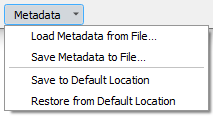
Figura 8.14 Opciones de carga/guardado de metadatos
La ubicación «Predeterminada» utilizada por Guardar en Ubicación Predeterminada y Restaurar desde Ubicación Predeterminada cambia dependiendo de la fuente de datos subyacente y de su configuración:
Para fuentes de datos PostgreSQL si la opción de configuración Permitir guardar/cargar metadatos de capas QGIS en la base de datos está marcada los metadatos se almacenan dentro de una tabla dedicada en la base de datos.
Para fuentes de datos GeoPackage Guardar en Ubicación Predeterminada siempre guarda los metadatos en las tablas de metadatos internas del GeoPackage.
Cuando los metadatos se almacenan en tablas internar de PostgreSQL o GeoPackage pueden llegar a estar disponibles para búsquedas y filtrado en el navegador y en el panel búsqueda de metadatos de capa.
Para el resto de fuentes de datos basadas en ficheros Guardar en ubicación Predeterminada guarda los metadatos en un fichero
.qmdjunto al fichero.En todos los demás casos Guardar en ubicación Predeterminada guarda los metadatos en una base de datos local
.sqlite.
8.6.2. Notas de capa
Las notas de capa le permiten documentar la capa dentro del proyecto actual. Pueden ser lugar para almacenar mensajes importantes para los usuarios del proyecto como listas de tareas, instrucciones, advertencias, …
Desde el menú contextual de la capa en el panel Layers, seleccione Add layer notes… y llene el cuadro de diálogo abierto con los textos necesarios.
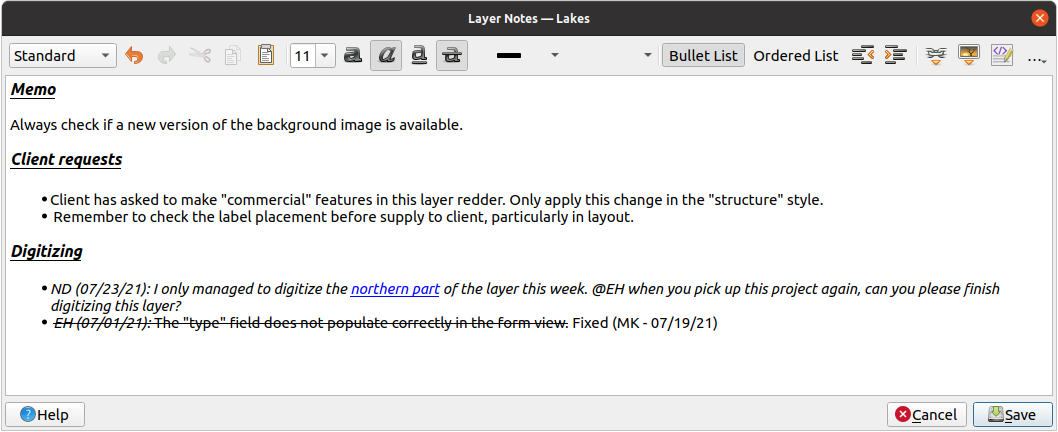
Figura 8.15 Agregar notas a una capa
El cuadro de diálogo Add layer notes proporciona un cuadro de texto multilínea basado en html con un conjunto completo de herramientas para:
manipulación de texto: cortar, copiar, pegar, deshacer, rehacer
formato de caracteres, aplicado a todo o parte del contenido: tamaño y color de fuente, negrita, cursiva, subrayado, tachado, color de fondo, resaltado de URL
estructuración de párrafos: viñetas y listas numeradas, sangría, encabezados predefinidos
inserción de archivos, incluso con arrastrar y soltar
edición con codificación HTML
Desde el menú desplegable … en el extremo derecho de la barra de herramientas, puede:
Remover todo el formato
Eliminar formato de caracteres
Borrar todo el contenido
En el panel Layers, a una capa con una nota se le asigna el  icono que, al pasar el mouse, muestra la nota. Haga clic en el icono para editar la nota. También puede hacer clic derecho en la capa y Edit layer note… o Remove layer note.
icono que, al pasar el mouse, muestra la nota. Haga clic en el icono para editar la nota. También puede hacer clic derecho en la capa y Edit layer note… o Remove layer note.
Nota
Las notas son parte del layer style y se pueden guardar en el archivo .qml o .qlr. También se pueden transferir de una capa a otra mientras se copia y pega el estilo de capa.
8.7. Almacenando valores en variables
En QGIS, puede usar variables para almacenar valores recurrentes útiles (por ejemplo, el título del proyecto o el nombre completo del usuario) que se pueden usar en expresiones. Las variables se pueden definir en el nivel global de la aplicación, el nivel del proyecto, el nivel de la capa, el nivel del modelador de procesamiento, el nivel del diseño y el nivel del elemento del diseño. Al igual que las reglas en cascada de CSS, las variables se pueden sobrescribir; por ejemplo, una variable de nivel de proyecto sobrescribirá cualquier variable de nivel global de aplicación configurada con el mismo nombre. Puede usar estas variables para crear cadenas de texto u otras expresiones personalizadas usando el carácter @ antes del nombre de la variable. Por ejemplo, en el diseño de impresión creando una etiqueta con este contenido:
This map was made using QGIS [% @qgis_version %]. The project file for this
map is: [% @project_path %]
Representará la etiqueta como ésta:
This map was made using QGIS 3.4.4-Madeira. The project file for this map is:
/gis/qgis-user-conference-2019.qgs
Además de preset read-only variables, puede definir sus propias variables personalizadas para cualquiera de los niveles mencionados anteriormente. Puedes gestionar:
variables globales desde el menú
variables del proyecto desde el diálogo Propiedades del Proyecto (Ver Propiedades del proyecto)
variables de capa vectorial desde el diálogo Propiedades de capa (ver El Diálogo de las Propiedades del Vector);
variables del modelador desde el diálogo Diseñador de modelos (véase El diseñador de modelos);
variables de diseño desde el panel Diseño en el Diseñador de Impresión (ver El Panel de Diseño);
y variables de elementos de diseño desde el panel Propiedades de elementos en el Diseñador de Impresión (ver Opciones de Elementos comunes de Composición).
Para diferenciarse de las variables editables, los nombres y valores de las variables de solo lectura se muestran en cursiva. Por otro lado, las variables de nivel superior sobrescritas por las de nivel inferior se tachan.
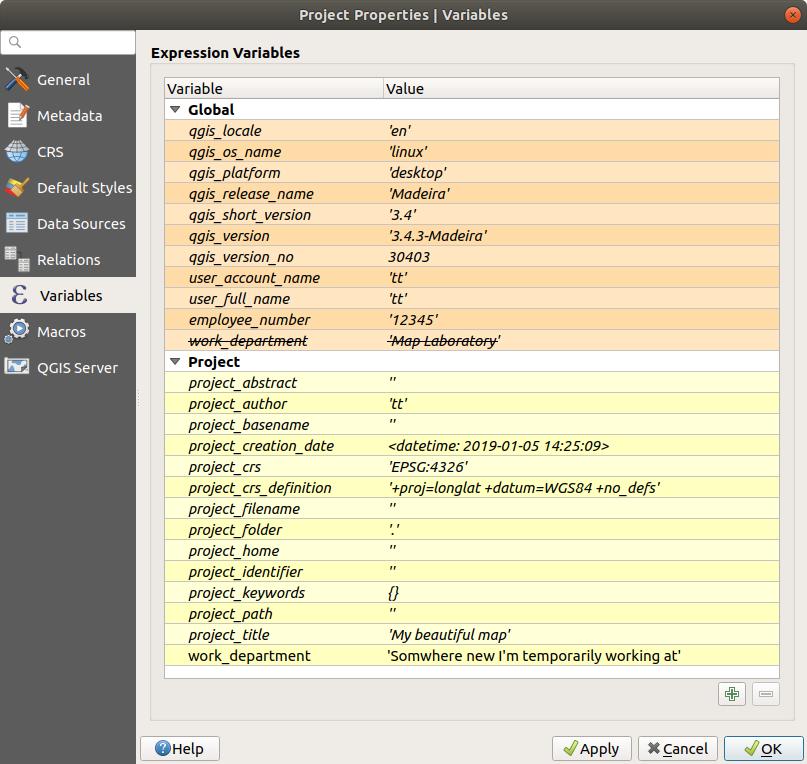
Figura 8.16 Editor de variables a nivel de proyecto
Nota
Puede leer más sobre variables y encontrar algunos ejemplos en las publicaciones del blog de Nyall Dawson’s Explorando variables en QGIS 2.12, parte 1, parte 2 y parte 3 .
8.8. Autenticación
QGIS tiene la facilidad de almacenar/recuperar credenciales de autenticación de manera segura. Los usuarios pueden guardar credenciales de forma segura en configuraciones de autenticación, que se almacenan en una base de datos portátil, se pueden aplicar a las conexiones del servidor o la base de datos, y sus tokens de ID en los archivos de proyecto o configuración hacen referencia a ellos de forma segura. Para obtener más información, consulte Sistema de autenticación.
Se debe configurar una contraseña maestra al inicializar el sistema de autenticación y su base de datos portátil.
8.9. Widgets comunes
En QGIS, hay algunas opciones con las que a menudo tendrá que trabajar. Para mayor comodidad, QGIS le proporciona widgets especiales que se presentan a continuación.
8.9.1. Selector de color
8.9.1.1. El diálogo Color
El diálogo Seleccionar color aparecerá cada vez que haga click en  icono para elegir un color. Las características de este cuadro de diálogo dependen del estado de la casilla de verificación del parámetro Usar cuadros de diálogo del selector de color nativo en :menuselection:` Configuración -> Opciones … -> General`. Cuando se marca, el diálogo de color utilizado es el nativo del sistema operativo en el que se ejecuta QGIS. De lo contrario, se utiliza el selector de color personalizado QGIS.
icono para elegir un color. Las características de este cuadro de diálogo dependen del estado de la casilla de verificación del parámetro Usar cuadros de diálogo del selector de color nativo en :menuselection:` Configuración -> Opciones … -> General`. Cuando se marca, el diálogo de color utilizado es el nativo del sistema operativo en el que se ejecuta QGIS. De lo contrario, se utiliza el selector de color personalizado QGIS.
El cuadro de diálogo de selección de color personalizado tiene cuatro pestañas diferentes que le permiten seleccionar colores mediante ![]() Rampa de color,
Rampa de color, ![]() Rueda de colores,
Rueda de colores, ![]() Muestras de color o
Muestras de color o ![]() Selector de color. Con las dos primeras pestañas, puede buscar todas las combinaciones de colores posibles y aplicar su elección al elemento.
Selector de color. Con las dos primeras pestañas, puede buscar todas las combinaciones de colores posibles y aplicar su elección al elemento.
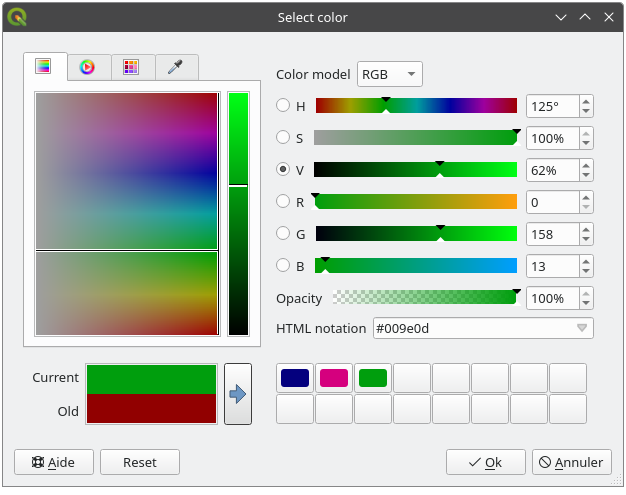
Figura 8.17 Pestaña de selección de rampa de color
En la pestaña ![]() Color swatches, puedes elegir de una lista de paletas de colores (ver Configuración de colores para detalles). Todos menos la paleta Colores recientes se puede modificar con los botones
Color swatches, puedes elegir de una lista de paletas de colores (ver Configuración de colores para detalles). Todos menos la paleta Colores recientes se puede modificar con los botones  Agregar color actual y
Agregar color actual y  Eliminar color seleccionado en la parte inferior del marco.
Eliminar color seleccionado en la parte inferior del marco.
El botón … junto al cuadro combinado de paleta también ofrece varias opciones para:
copiar, pegar, importar o exportar colores
crear, importar o borrar paletas de color
agregue la paleta personalizada al widget selector de color con el elemento Mostrar en botones de color (ver Figura 8.19)
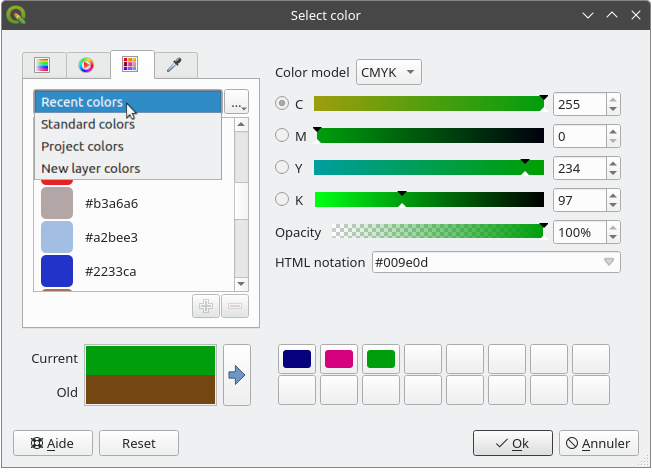
Figura 8.18 Pestaña de muestras del selector de color
Otra opción es usar el ![]() Selector de color que le permite muestrear un color debajo del cursor del mouse en cualquier parte de la interfaz de usuario de QGIS o incluso desde otra aplicación: presione la barra espaciadora mientras la pestaña está activa, mueva el mouse sobre el color deseado y haga click en él o presione la barra espaciadora nuevamente. También puede hacer click en el botón Muestra de Color para activar el selector.
Selector de color que le permite muestrear un color debajo del cursor del mouse en cualquier parte de la interfaz de usuario de QGIS o incluso desde otra aplicación: presione la barra espaciadora mientras la pestaña está activa, mueva el mouse sobre el color deseado y haga click en él o presione la barra espaciadora nuevamente. También puede hacer click en el botón Muestra de Color para activar el selector.
Sea cual sea el método utilizado, el color seleccionado siempre se describe mediante opciones de un Modelo de color que por defecto es el modelo de color del proyecto:
RGB: el color se ajusta utilizando deslizadores para los valores
HSV(Tono, Saturación, Valor) oRGB(Rojo, Verde, Azul).CMYK (Cian, Magenta, Amarillo, Negro)
Modificar un color es tan simple como hacer click en la rueda de color o la rampa o en cualquiera de los controles deslizantes de parámetros de color. Puede ajustar dichos parámetros con el cuadro giratorio al lado o desplazando la rueda del mouse sobre el control deslizante correspondiente. También puede escribir el color en notación HTML. Finalmente, hay un control deslizante Opacidad para establecer el nivel de transparencia.
El cuadro de diálogo también proporciona una comparación visual entre el color Viejo (aplicado al objeto) y el Actual (siendo seleccionado). Usando arrastrar y soltar o presionando el botón  Agregar color a tela, cualquiera de estos colores se puede guardar en una ranura para facilitar el acceso.
Agregar color a tela, cualquiera de estos colores se puede guardar en una ranura para facilitar el acceso.
Truco
Modificación rápida de color
Arrastre y suelte un widget selector de color en otro para aplicar su color.
8.9.1.2. El atajo al desplegable de color
Haga click en la flecha desplegable a la derecha del botón  de color para mostrar un widget para una rápida selección de color. Este acceso directo proporciona acceso a:
de color para mostrar un widget para una rápida selección de color. Este acceso directo proporciona acceso a:
una rueda de colores para elegir un color
un control deslizante alfa para cambiar la opacidad del color
las paletas de colores previamente configuradas en Mostrar en botones de colores
copia el color actual y pégalo en otro widget
elige un color desde cualquier lugar de la pantalla de tu computadora
elija un color del cuadro de diálogo selector de color
arrastre y suelte el color de un widget a otro para una modificación rápida
Truco
Desplace la rueda del ratón sobre un widget selector de color para modificar rápidamente la opacidad del color asociado.
Nota
Cuando el widget de color se establece en un project color a través de las propiedades de anulación definidas por datos, las funciones anteriores para cambiar el color no están disponibles. Primero debe Desvincular color o Borrar la definición.
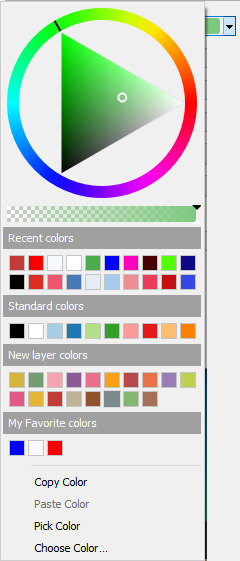
Figura 8.19 Menú seleccionador rápido de color
8.9.1.3. El atajo de la rampa de color desplegable
Las rampas de color son una forma práctica de aplicar un conjunto de colores a una o varias características. Su creación se describe en la sección Estableciendo una Rampa de Color.En cuanto a los colores, presionando el botón |selectColorRamp|de rampa de color abre el cuadro de diálogo correspondiente del tipo de rampa de color que le permite cambiar sus propiedades.
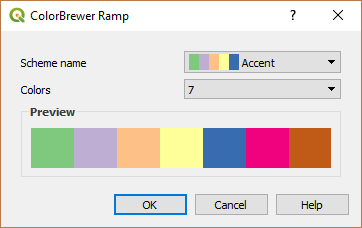
Figura 8.20 Personalizando una rampa colorbrewer
El menú desplegable a la derecha del botón brinda acceso rápido a un conjunto más amplio de rampas de color y opciones:
Invertir Rampa de Color
Borrar rampa actual para desactivar cualquier rampa de color asignada al widget (disponible sólo en algunos contextos)
 Random Colors: disponible solo en algunos contextos (p. ej., cuando se usa una rampa de color para una simbología de capa), al marcar esta entrada se crea y aplica una rampa de color con colores aleatorios. También habilita una entrada Shuffle random colors para regenerar una nueva rampa de color aleatoria si la actual no es satisfactoria.
Random Colors: disponible solo en algunos contextos (p. ej., cuando se usa una rampa de color para una simbología de capa), al marcar esta entrada se crea y aplica una rampa de color con colores aleatorios. También habilita una entrada Shuffle random colors para regenerar una nueva rampa de color aleatoria si la actual no es satisfactoria.una vista previa de las rampas de color
gradienteocatálogo:cpt-citymarcadas como Favoritos en el diálogo Administrador de EstiloTodas las rampas de color para acceder a la base de datos de rampas de color compatibles
Crear nueva rampa de color… de cualquier tipo compatible que pueda usarse en el widget actual (tenga en cuenta que esta rampa de color no estará disponible en otro lugar a menos que la guarde en la biblioteca)
Editar rampa de color…, lo mismo que hacer click en el botón de rampa de color completo
Guardar rampa de color…, para guardar la rampa de color actual con sus personalizaciones en la biblioteca de estilos
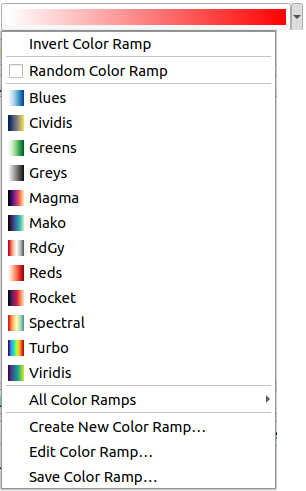
Figura 8.21 Widget de selección rápida de rampa de color
8.9.2. Widget Símbolo
El widget selector:guilabel:Symbol es un atajo conveniente cuando desea establecer las propiedades de símbolo de una característica. Al hacer click en la flecha desplegable, se muestran las siguientes opciones de símbolos, junto con las características de color drop-down widget:
Configurar símbolo…: lo mismo que presionar el widget selector de símbolos. Abre un diálogo para configurar el symbol parameters.
Copiar símbolo del elemento actual
Pegar símbolo en el elemento actual, acelerando la configuración
Borrar símbolo actual para anular cualquier símbolo asignado al widget (disponible sólo en algunos contextos)
Truco
Desplace la rueda del ratón sobre un widget de marcador o símbolo de línea para modificar rápidamente el tamaño del símbolo asociado.
8.9.3. Selector de archivos remoto o incrustado
Junto con el widget de selección de archivos, el botón … a veces mostrará una flecha desplegable. Esto suele estar disponible cuando se utiliza:
un archivo SVG en un símbolo o una etiqueta
una imagen rasterizada para personalizar símbolos, etiquetas, texturas o decoraciones
Presionar la flecha le proporcionará un menú para:
Seleccionar Archivo…, para cargar el archivo desde el sistema de archivos. El archivo se identifica a través de la ruta del archivo y QGIS necesita resolver la ruta para mostrar la imagen correspondiente.
Desde URL…, para cargar el archivo desde una URL remota. Como en el caso anterior, la imagen sólo se cargará cuando se recupere correctamente el recurso remoto.
Incorporar archivo…, para incrustar el archivo dentro del proyecto actual, la base de datos de estilos o la plantilla de diseño de impresión. El archivo siempre se muestra como parte del elemento. Esta es una forma conveniente de crear proyectos autónomos con símbolos personalizados que pueden ser fácilmente compartidos entre diferentes usuarios e instalaciones de QGIS.
Extraer archivo incrustado…, para extraer el archivo incrustado del widget y guardarlo en disco.
8.9.4. Selector de escala de visibilidad
El selector de escala de visibilidad proporciona opciones para controlar las escalas a las que un elemento se hará visible en el lienzo del mapa. Fuera del rango de escalas especificado, los elementos no se muestran. Puede aplicarse, por ejemplo, a capas, etiquetas o diagramas, desde su pestaña de propiedades Renderizado.
Rellene la caja Mínimo (exclusivo) con la escala deseada más alejada tecleando el valor o seleccionándolo de las escalas predefinidas
y/o rellene la casilla Máximo (inclusive) con la escala deseada más ampliada
El botón
 Set to current canvas scale situado junto a los cuadros de escala establece la escala actual del lienzo del mapa como límite de la visibilidad del rango. Pulse la flecha situada junto al botón para acceder a las escalas de los mapas de los diseños y reutilizarlas para rellenar el cuadro.
Set to current canvas scale situado junto a los cuadros de escala establece la escala actual del lienzo del mapa como límite de la visibilidad del rango. Pulse la flecha situada junto al botón para acceder a las escalas de los mapas de los diseños y reutilizarlas para rellenar el cuadro.

Figura 8.22 Widget selector de escala de visibilidad
8.9.5. Selector de extensión espacial
El widget selector Extent es un atajo conveniente cuando desea seleccionar una extensión espacial para asignar a una capa o para limitar las acciones a ejecutar. Dependiendo del contexto, ofrece la posibilidad de elegir entre:
Extensión actual de la capa: por ejemplo, al exportar una capa.
: utiliza la extensión de una capa cargada en el proyecto actual
Utilizar Extensión del lienzo del mapa actual
Dibujar sobre lienzo: un rectángulo cuyas coordenadas se utilizan a continuación
Calcular desde Marcador: usa la extensión de un marcador guardado
Calcular desde el Diseño de Mapa: usa la extensión de un diseño de mapa
Introduzca o edite las coordenadas como
xmin, xmax, ymin, ymax
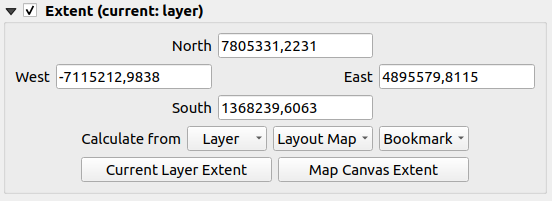
Figura 8.23 Widget selector de extensión
8.9.6. Selector de Fuente
El control selector de Fuente es un atajo conveniente cuando desea establecer propiedades de fuente para información textual (etiquetas de entidades, etiquetas de decoración, texto de leyenda de mapa, …). Al hacer clic en la flecha desplegable, se muestran algunas o todas las siguientes opciones:
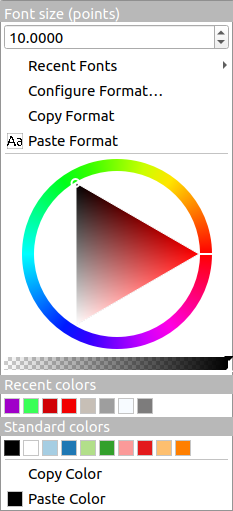
Figura 8.24 Menú desplegable de selección de fuente
Borrar formato de texto actual para desactivar cualquier formato de texto asignado al widget (disponible sólo en algunos contextos)
Tamaño de fuente en la unidad asociada
menú con la fuente activa marcada (en la parte superior)
Configurar formato…: igual que pulsar el widget selector de fuentes. Abre el diálogo Formato de texto, que proporciona opciones avanzadas de formato como color, opacidad, orientación, notación HTML, búfer, fondo, sombra, …
Copiar formato del texto
Pegar Formato al texto, acelerando la configuración
el control de color para configuración rápida del color
Truco
Desplace la rueda del ratón sobre un widget selector de fuentes para modificar rápidamente el tamaño de la fuente del texto asociado.
8.9.7. Selector de Unidad
Las propiedades de tamaño de los elementos (etiquetas, símbolos, elementos de diseño, …) en QGIS no están necesariamente vinculadas ni a las unidades del proyecto ni a las unidades de una capa en particular. Para un gran conjunto de propiedades, el menú desplegable:guilabel:Unidad le permite ajustar sus valores de acuerdo con la representación que desee (según la resolución de la pantalla, el tamaño del papel o el terreno). Las unidades disponibles son:
Milímetros
Puntos
Pixels
Pulgadas
Porcentaje: permite establecer algunas propiedades como un porcentaje de otra. Por ejemplo, esto es útil para la creación de formatos de texto en los que los componentes (tamaño del búfer, radio de la sombra…) se escalan a medida que cambia el tamaño del texto, en lugar de tener tamaños de búfer/sombra constantes. Así no es necesario ajustar esos tamaños cuando cambia el tamaño del texto.
Metros en escala: Permite establecer siempre el tamaño en metros, independientemente de cuáles sean las unidades subyacentes del mapa (por ejemplo, pueden estar en pulgadas, pies, grados geográficos, …). El tamaño en metros se calcula en base a la configuración actual del elipsoide del proyecto y una proyección de las distancias en metros en el centro de la extensión actual del mapa. Para los mapas en un sistema de coordenadas proyectadas se calcula utilizando unidades proyectadas. Para los mapas en un sistema geográfico (latitud/longitud) el tamaño se aproxima calculando el tamaño en metros utilizando cálculos elipsoidales para la escala vertical del mapa.
y Unidades de mapa: el tamaño se escala según la escala de la vista del mapa. Como esto puede conducir a valores demasiado grandes o demasiado pequeños, use el botón
 al lado de la entrada para restringir el tamaño a un rango de valores basado en:
al lado de la entrada para restringir el tamaño a un rango de valores basado en:El Escala mínima y el :guilabel:` Escala máxima`: el valor se escala en función de la escala de la vista del mapa hasta llegar a cualquiera de estos límites de escala. Fuera del rango de escala, se mantiene el valor en el límite de escala más cercano.
y/o El Tamaño mínimo y el :guilabel:` Tamaño máximo` en
mm: El valor se escala en función de la escala de la vista del mapa hasta que alcanza cualquiera de estos límites; Luego se mantiene el tamaño límite.

Figura 8.25 Cuadro de diálogo Ajustar rango de escala
8.9.8. Formato de Números
Los formateadores numéricos permiten formatear valores numéricos para su visualización, utilizando una variedad de técnicas de formateo diferentes (por ejemplo, notación científica, valores monetarios, valores porcentuales, formateo personalizado, etc.). Por ejemplo, para definir el texto de una barra o tabla de escala, una leyenda de rampa de color, un gráfico de perfil de elevación, etc.

Figura 8.26 Formatting numeric value
Se admiten diferentes categorías de formatos. Para la mayoría de ellos, puede establecer parte o todas las siguientes opciones numéricas:
Pero también pueden tener sus configuraciones personalizadas. Las categorías proporcionadas son:
General, la categoría por defecto: no tiene configuración y muestra los valores establecidos en las propiedades del widget principal o usando la configuración global.
Expresión personalizada: permite crear una expresión QGIS personalizada para formatear números. La expresión puede utilizar la variable
@valuepara recuperar el valor a formatear y, a continuación, utilizar cualquier función de expresión estándar de QGIS para darle el formato deseado.Número
El valor puede ser Redondeado a un número autodefinido de posiciones Decimales o su cifras significativas
personalice el separador de Miles y el separador Decimal
Rumbo para una representación textual de una dirección/rumbo usando:
Formato: posibles rangos de valores son
0 a 180°, con sufijo E/W,-180 a +180°y0 a 360°numero de cifras Decimales
Moneda para una representación de texto de un valor de moneda.
Prefijo
Sufijo
numero de cifras Decimales
Fracción para una representación fraccional común de un valor decimal (e.g. 1/2 en lugar de 0.5)
Porcentage - agrega
%a los valores, con ajuste de:numero de cifras Decimales
Escalado para indicar si los valores reales ya representan porcentajes (luego se mantendrán como están) o fracciones (luego se convertirán)
Notación Científica de la forma
2.56e+03. El número de cifras Decimales puede ser ajustado.
Se muestra una vista previa en vivo de la configuración debajo de la muestra Muestra.
8.9.9. Modos de Mezcla
QGIS ofrece diferentes opciones para efectos de renderizado especiales con estas herramientas que anteriormente solo sabías de los programas gráficos. Los modos de fusión se pueden aplicar en capas y entidades, y también en elementos de diseño de impresión:
Normal: Este es el modo de mezcla estándar, que utiliza el canal alfa del píxel superior para mezclarse con el píxel que tiene debajo. Los colores no se mezclan.
Aclarar: Selecciona el máximo de cada componente de los píxeles de primer plano y de fondo. Tenga en cuenta que los resultados tienden a ser irregulares y duros.
Pantalla: Los píxeles claros del origen se pintan sobre el destino, mientras que los oscuros no. Este modo es muy útil para mezclar la textura de un elemento con la de otro elemento (como usar una sombra de colina para texturizar otra capa).
Esquivar: Aclara y satura los píxeles subyacentes basándose en la luminosidad del píxel superior. Los píxeles superiores más brillantes hacen que aumente la saturación y el brillo de los píxeles subyacentes. Esto funciona mejor si los píxeles superiores no son demasiado brillantes. De lo contrario, el efecto es demasiado extremo.
Adición: Añade los valores de píxel de un elemento al otro. En caso de valores superiores al valor máximo (en el caso de RGB), se muestra el color blanco. Este modo es adecuado para resaltar elementos.
Oscurecer: Conserva los valores más bajos de cada componente de los píxeles de primer plano y de fondo. Al igual que aclarar, los resultados tienden a ser irregulares y duros.
Multiplicar: Los valores de píxel del elemento superior se multiplican por los valores correspondientes del elemento inferior. Los resultados son más oscuros.
Quemar: Los colores más oscuros en el elemento superior hacen que los elementos subyacentes se oscurezcan. Quemar puede usarse para retocar y colorear las capas subyacentes.
Superposición: Combina los modos multiplicar y mezcla de pantalla. Las partes claras se aclaran y las oscuras se oscurecen.
Luz suave: Muy similar a la superposición, pero en lugar de usar multiplicar/pantalla usa quemar/doblar color. Se supone que emula el reflejo de una luz suave sobre una imagen.
Luz dura: La luz dura también es muy similar al modo de superposición. Se supone que emula la proyección de una luz muy intensa sobre una imagen.
Diferencia: Resta el píxel superior del inferior, o al revés, para obtener siempre un valor positivo. La mezcla con negro no produce ningún cambio, ya que la diferencia con todos los colores es cero.
Sustraer: Resta los valores de píxel de un elemento del otro. En caso de valores negativos, se muestra en negro.
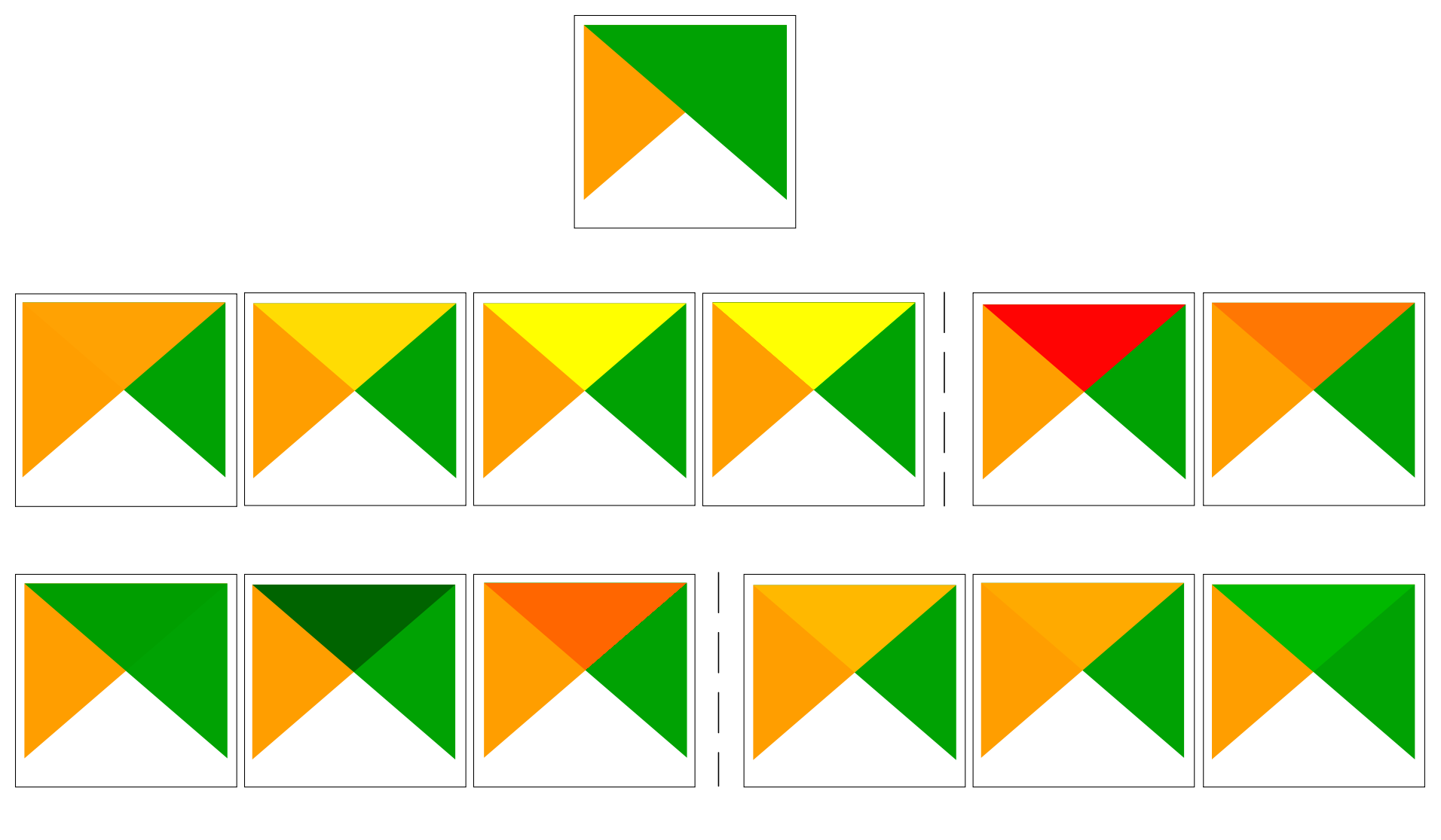
Figura 8.27 Ejemplos de modos de fusión aplicados a un elemento verde sobre uno naranja
De arriba a abajo, de izquierda a derecha: Normal – Aclarar, Trama, Esquivar, Suma – Diferencia, Resta – Oscurecer, Multiplicar, Quemar – Superponer, Luz suave, Luz dura
Cuando una capa forma parte de un grupo que renderiza las capas como un grupo, Existen modos de fusión adicionales para el renderizado. Proporcionan métodos para recortar el renderizado del contenido de una capa por el contenido de una segunda capa «máscara».
Enmascarado Por Debajo: La salida es el píxel superior, donde la opacidad se reduce en la del píxel inferior.
Máscara inferior: La salida es el píxel inferior, donde la opacidad se reduce en la del píxel superior.
Inverso Enmascarado Por Debajo: La salida es el píxel superior, donde la opacidad se reduce en el inverso del píxel inferior.
Máscara Inversa Abajo: La salida es el píxel inferior, donde la opacidad se reduce en el inverso del píxel superior.
Pintar dentro de abajo: El píxel superior se mezcla sobre el píxel inferior, con la opacidad del píxel superior reducida por la opacidad del píxel inferior.
Pintar por debajo del interior: El píxel inferior se mezcla encima del píxel superior, con la opacidad del píxel inferior reducida por la opacidad del píxel superior.
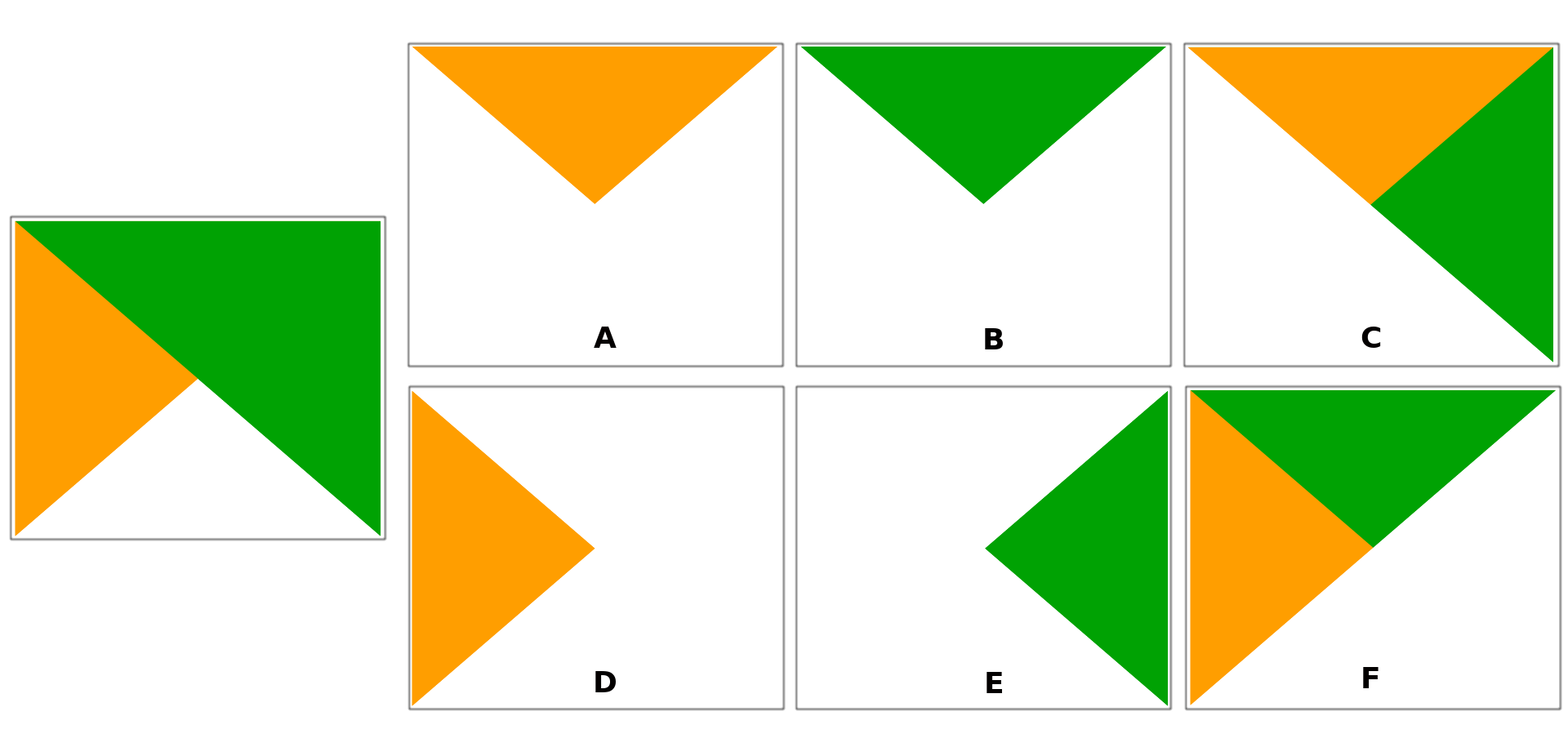
Figura 8.28 Ejemplos de modo de recorte de fusión aplicado a la capa verde superior de un grupo
A: Enmascarado Por Abajo B: Enmascarar Por Debajo C: Pintar Por Dentro D: Máscara Inversa Abajo E: Inverso Enmascarado Por Debajo F: Pintar dentro de abajo
8.9.10. Configuración de anulación definida por datos
Junto a muchas opciones en el cuadro de diálogo de propiedades de capa vectorial o en la configuración del diseño de impresión, encontrará un icono ![]() Anulación de datos definidos. Utilizando expressions basado en atributos de capa o configuraciones de elementos, funciones preconstruidas o personalizadas y variables, Esta herramienta le permite establecer valores dinámicos para los parámetros. Cuando está habilitado, el valor devuelto por este widget se aplica al parámetro independientemente de su valor normal (casilla de verificación, cuadro de texto, control deslizante …).
Anulación de datos definidos. Utilizando expressions basado en atributos de capa o configuraciones de elementos, funciones preconstruidas o personalizadas y variables, Esta herramienta le permite establecer valores dinámicos para los parámetros. Cuando está habilitado, el valor devuelto por este widget se aplica al parámetro independientemente de su valor normal (casilla de verificación, cuadro de texto, control deslizante …).
8.9.10.1. El widget de anulación de datos definido
Al hacer click en el icono ![]() Anulación de datos definidos muestra las siguientes entradas:
Anulación de datos definidos muestra las siguientes entradas:
Descripción … que indica si la opción está habilitada, qué entrada se espera, el tipo de entrada válido y la definición actual. Al pasar el cursor sobre el widget también aparece esta información.
Almacenar datos en el proyecto: un botón que permite almacenar la propiedad utilizando el mecanismo Propiedades de almacenamiento auxiliar.
Tipo de campo: una entrada para seleccionar de los campos de la capa que coinciden con el tipo de entrada válido.
Color: cuando el widget está vinculado a una propiedad de color, este menú da acceso a los colores definidos como parte del actual project’s colors scheme.
Un menú Variable: para acceder a los disponibles definidos por el usuario variables
El botón Editar … para crear o editar la expresión a aplicar, usando el diálogo Generador de cadenas de expresión. Para ayudarlo a completar correctamente la expresión, se proporciona un recordatorio del formato de salida esperado en el cuadro de diálogo.
Los botones Pegar y :guilabel:` Copiar`.
botón de Limpiar para eliminar la configuración.
Para propiedades numéricas y de color,:guilabel:Assistente… para reescalar cómo se aplican los datos de la característica a la propiedad (más detalles below)
Truco
Use el botón derecho para (des)activar la anulación de datos
Cuando la opción de anulación definida por datos se configura correctamente, el icono es amarillo ![]() o
o ![]() . Si está roto, el icono es rojo
. Si está roto, el icono es rojo ![]() o
o ![]() .
.
Puede habilitar o deshabilitar un botón configurado ![]() anulación definida por datos simplemente haciendo click en el widget con el botón derecho del mouse.
anulación definida por datos simplemente haciendo click en el widget con el botón derecho del mouse.
Truco
Utilice el botón central del ratón para crear o editar la expresión a aplicar.
Puede abrir directamente el diálogo Constructor de cadenas de expresión para crear o editar la expresión a aplicar simplemente haciendo clic con el botón central del ratón en el widget ![]() Sobreescritura definida por datos.
Sobreescritura definida por datos.
8.9.10.2. Usar la interfaz de asistente definida por datos
Cuando el botón ![]() Data-defined override está asociado con un tamaño, una rotación, una opacidad o una propiedad de color, tiene una opción de Assistant… que le ayuda a cambiar la forma en que se aplican los datos al parámetro para cada característica. El asistente le permite:
Data-defined override está asociado con un tamaño, una rotación, una opacidad o una propiedad de color, tiene una opción de Assistant… que le ayuda a cambiar la forma en que se aplican los datos al parámetro para cada característica. El asistente le permite:
Defina los datos de Entrada, es decir:
Source: el atributo a representar, usando un campo o un
 expression
expressionel rango de valores a representar: puede ingresar manualmente los valores o usar el
 Fetch value range from layer para llenar estos campos automáticamente con los valores mínimos y máximos devueltos por la expresión Source aplicada a sus datos
Fetch value range from layer para llenar estos campos automáticamente con los valores mínimos y máximos devueltos por la expresión Source aplicada a sus datos
 Aplicar curva de transformación: de forma predeterminada, los valores de salida (consulte la configuración a continuación) se aplican a las características de entrada siguiendo una escala lineal. Puede anular esta lógica: habilite la opción de transformación, haga click en el gráfico para agregar puntos de interrupción y arrastre los puntos para aplicar una distribución personalizada.
Aplicar curva de transformación: de forma predeterminada, los valores de salida (consulte la configuración a continuación) se aplican a las características de entrada siguiendo una escala lineal. Puede anular esta lógica: habilite la opción de transformación, haga click en el gráfico para agregar puntos de interrupción y arrastre los puntos para aplicar una distribución personalizada.Defina los valores Salida: las opciones varían según el parámetro a definir. Puede establecer globalmente:
para una configuración de color, color ramp para aplicar a los valores y el color único para usar para valores NULOS
para los demás, los valores mínimo y máximo que se aplicarán a la propiedad seleccionada, así como el valor de tamaño/ángulo/opacidad para las entidades de origen ignoradas o NULL
para las propiedades de tamaño, el Scale method de representación que puede ser Flannery, Exponential, Surface, Radius or Linear
el Exponent a usar para el escalado de datos cuando el Scale method es de tipo exponencial o cuando se ajusta la opacidad
Cuando es compatible con la propiedad, se muestra una vista previa de actualización en vivo en el lado derecho del cuadro de diálogo para ayudarlo a controlar la escala del valor.
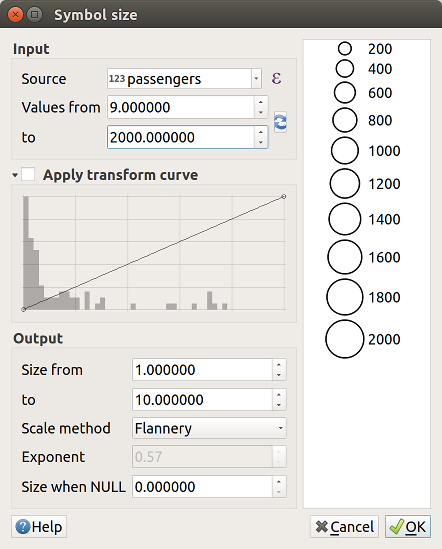
Figura 8.29 Tamaño de función de escala basado en el valor del campo de pasajeros
Los valores presentados en el asistente de tamaño variable anterior establecerán el tamaño “Data-defined override” con:
coalesce(scale_exp("passengers", 9, 2000, 1, 10, 0.57), 0)





























